Take Me to the Recipes
Brunei, the tiny sultanate nestled on the verdant island of Borneo, boasts a cuisine as rich and diverse as its history. Imagine a symphony of flavors, where Malay, Chinese and indigenous influences weave together to create the unique Bruneian food. Fresh seafood hauled straight from the South China Sea mingles with fragrant spices brought along ancient trade routes.
Intrigued? Buckle up for a delicious journey through Brunei’s cuisine, where we’ll explore how the country’s fascinating geography, vibrant history, and tropical climate have all played a part in shaping its irresistible dishes.
Take Me to the Recipes
Bruneian food – Key Takeaways
Each bite tells a story, whispering of ancient trade routes, bountiful waters, and ingenious adaptation. Let’s delve into 10 delicious takeaways that unlock the secrets behind Brunei’s irresistible dishes:
Maritime Bounty
Brunei’s long coastline and history as a seafaring nation make seafood a cornerstone of their cuisine. Fresh catches like prawns, squid, and barramundi are the stars of curries, soups, and sizzling grilled dishes.
Spice Trade Symphony
Imagine a time when Brunei was a hub for traders carrying exotic spices. This legacy lives on in the fragrant aromatics that grace Bruneian cuisine. Ginger, turmeric, chilies, and lemongrass add depth and complexity to curries, stir-fries, and even desserts.
Malaysian Influence
Brunei’s close cultural ties with neighboring Malaysia are evident in popular dishes like nasi lemak (coconut milk rice) and satay (skewered meats). Coconut milk, a staple in Malay cooking, lends a touch of creaminess to many Bruneian curries and stews.
Indigenous Inspiration
Brunei’s indigenous communities haven’t been left behind. Local ingredients like jungle ferns, wild herbs, and river fish add a unique dimension to traditional dishes. Hinava, a salad featuring raw fish cured in citrus and chilies, is a delicious example of these techniques.
Borneo’s Bounty
Brunei occupies part of the vast island of Borneo, known for its lush rainforests and abundant plant life. Fruits like mangoes, pineapples, and rambutans are enjoyed throughout the year, adding a burst of freshness to the cuisine.
The River’s Bounty
Brunei’s network of rivers has long been a source of sustenance. Freshwater fish play a significant role in the cuisine, featuring in dishes like ambuyat (a sour and spicy soup with sago flour) and kelupis (fried freshwater prawns).
Adaptation to Climate
Brunei’s hot and humid climate has influenced both ingredients and cooking methods. Steaming and grilling are popular techniques that help preserve food and keep things cool.
Sweet Endings
Brunei’s cuisine isn’t all about savory flavors. Desserts are a delightful conclusion to a meal, featuring ingredients like palm sugar, coconut milk, and glutinous rice. Kuih (bite-sized cakes) come in a variety of flavors and textures, offering a sweet and satisfying finish.
Preserving Traditions
Brunei is dedicated to preserving its culinary heritage. Traditional dishes are often passed down through generations, ensuring these unique flavors continue to tantalize taste buds.
A Fusion Feast
Brunei’s cuisine is a beautiful example of culinary fusion. Malay, Chinese, and indigenous influences come together to create something truly unique. Each bite is a journey through history and geography, a testament to the cultural richness of this fascinating country.
Where is Brunei?

Brunei is a small equatorial country on the northern coast of the island of Borneo in South-East Asia. The South China Sea lies to the north. Otherwise, it is bordered to all sides by the Malaysian state of Sarawak, which divides it in two. The coastal plain rises to mountains in the east.

Index to the Contents
- Take Me to the Recipes
- More Articles for Your Pleasure
- 10 Fascinating Facts about Brunei
- Brunei’s History and the Effect it has had on the Cuisine.
- How Brunei’s Climate and Geography Influences Food
- Understanding the Essence of Bruneian food Recipes
- Traditional Bruneian food
- Brunei’s National Dish
- The Most Popular Brunei Recipes
- Exploring Bruneian Street Food
- Exploring Brunei Ingredients: The Flavors of Brunei’s Cuisine
- What are the Health Implications of Brunei Cuisine?
- Bruneian food Recipes to Try at Home
- Conclusion
- Frequently Asked Questions
More Articles for Your Pleasure
- North and South American Cuisine – A Culinary Expedition
- European Cuisine: Savor the Continent’s Best Culinary Secrets!
- African Cuisine: Discover the Bold Flavors & Global Charm!
- Asian Cuisine Unlock its Secrets – Taste, Health & Global Influence!
- Oceania Cooking: A Culinary Journey Through the Pacific
- Caribbean Cuisine: Beyond Jerk Chicken
- Middle Eastern Food: A Flavor Journey
Savor iconic Brunei Dishes – Click on each tantalizing picture to open up the Recipe.
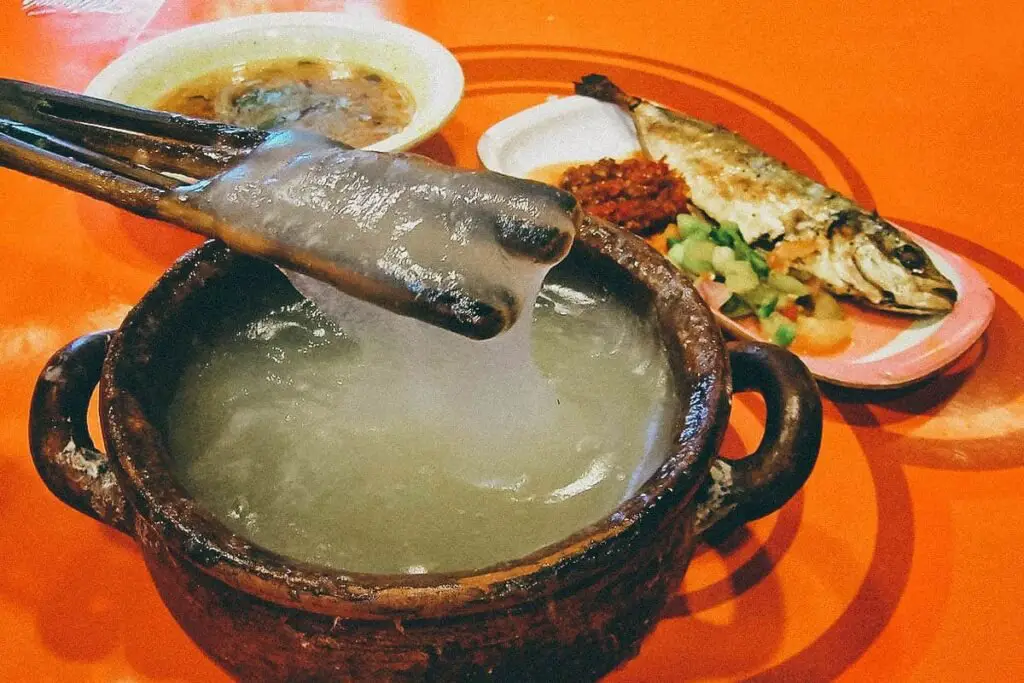
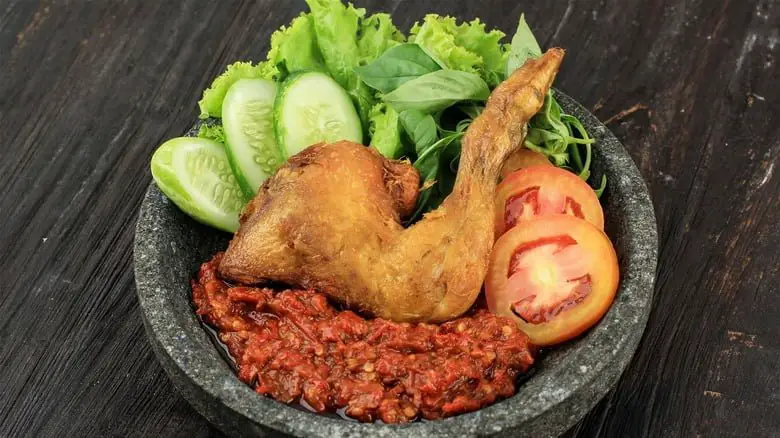
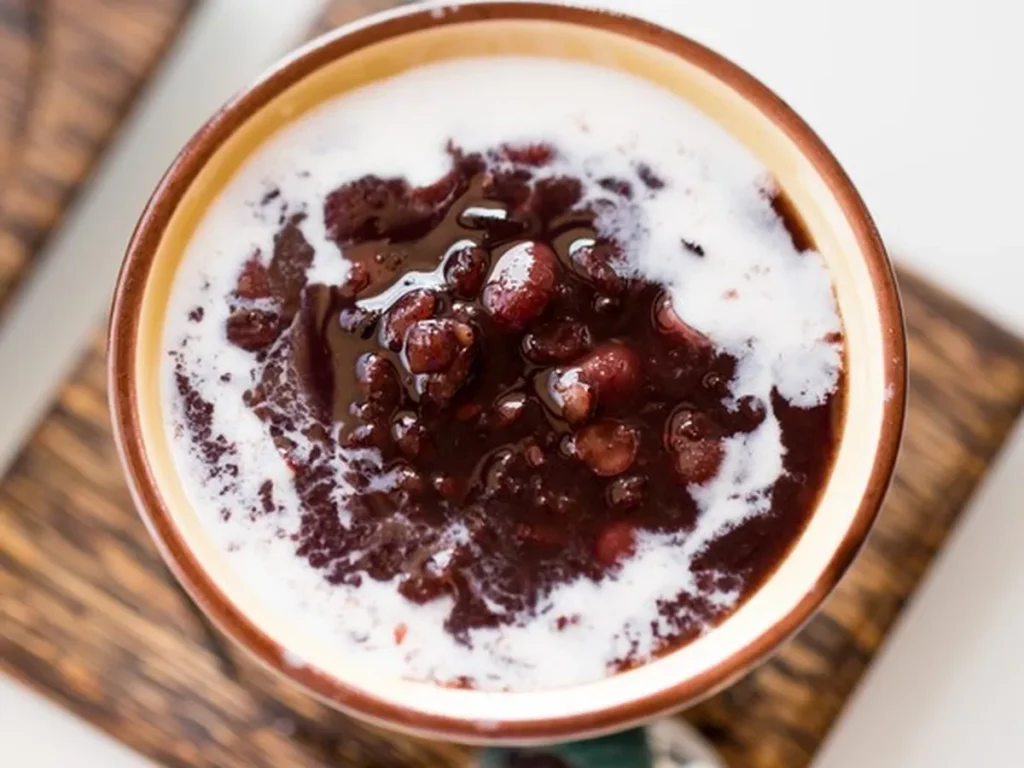
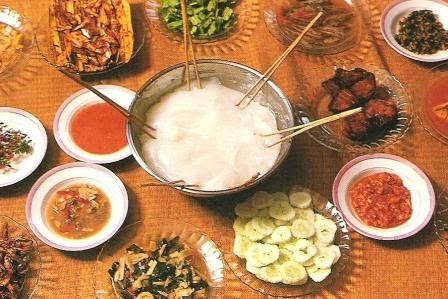
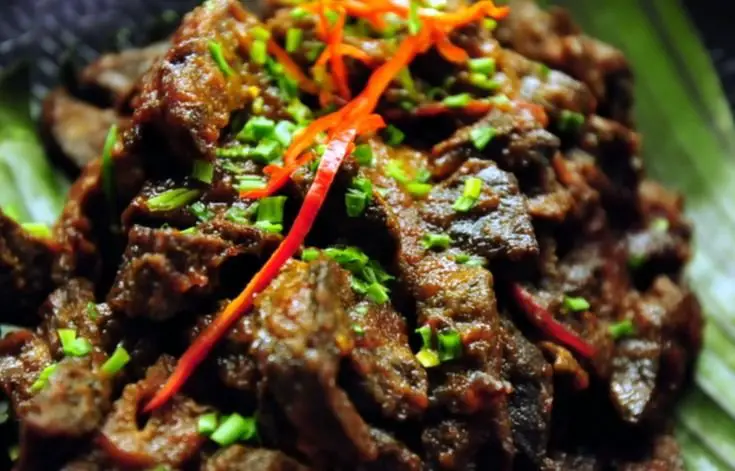
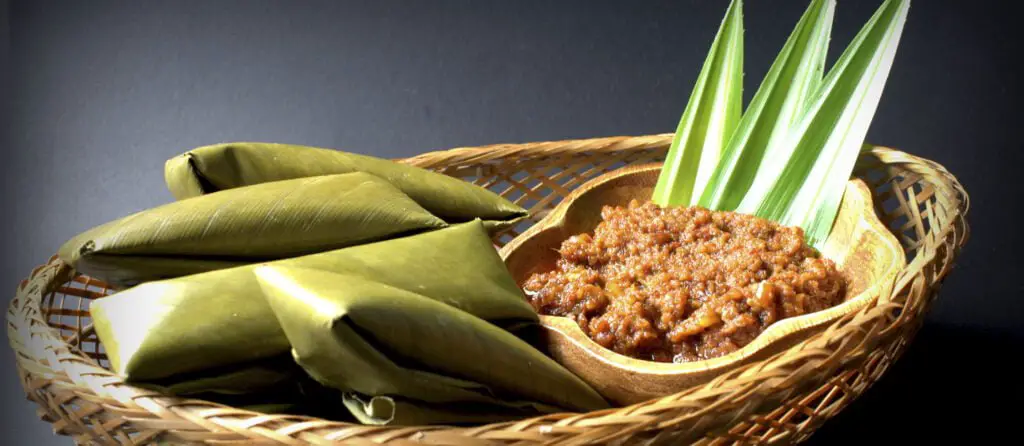
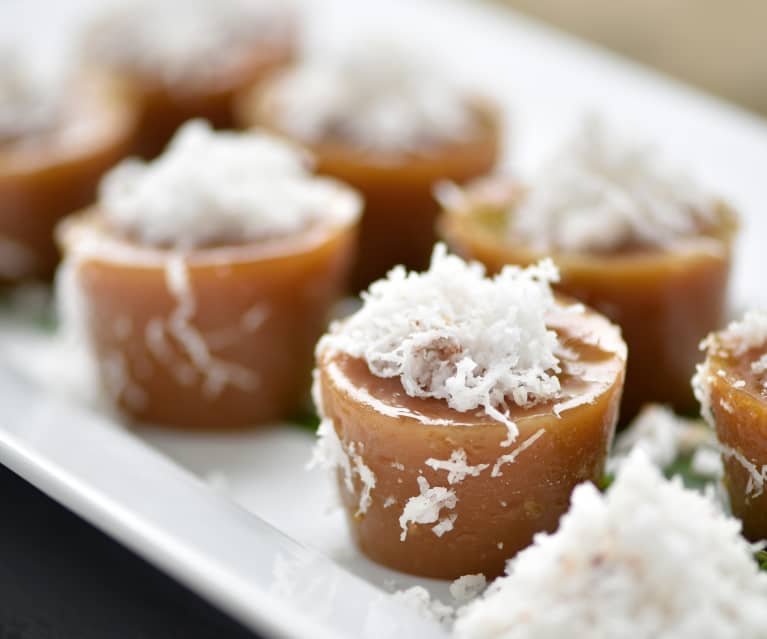

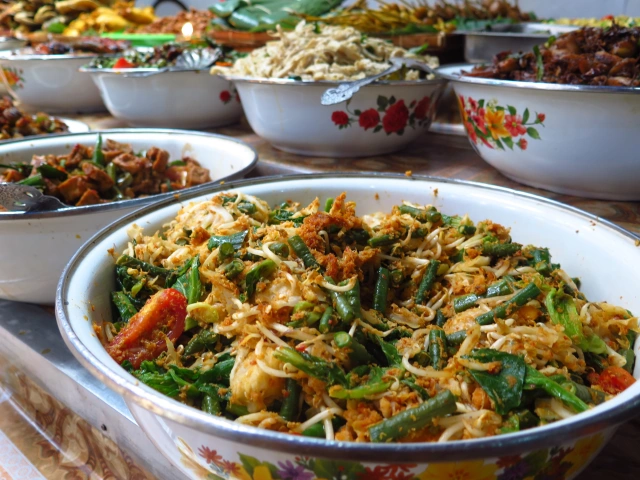
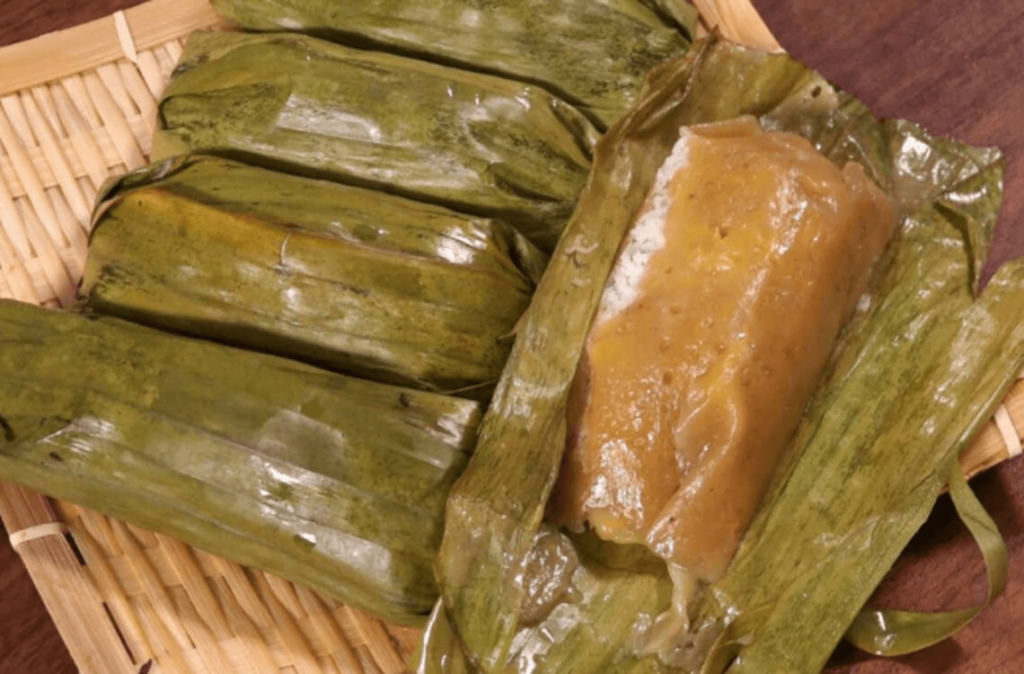

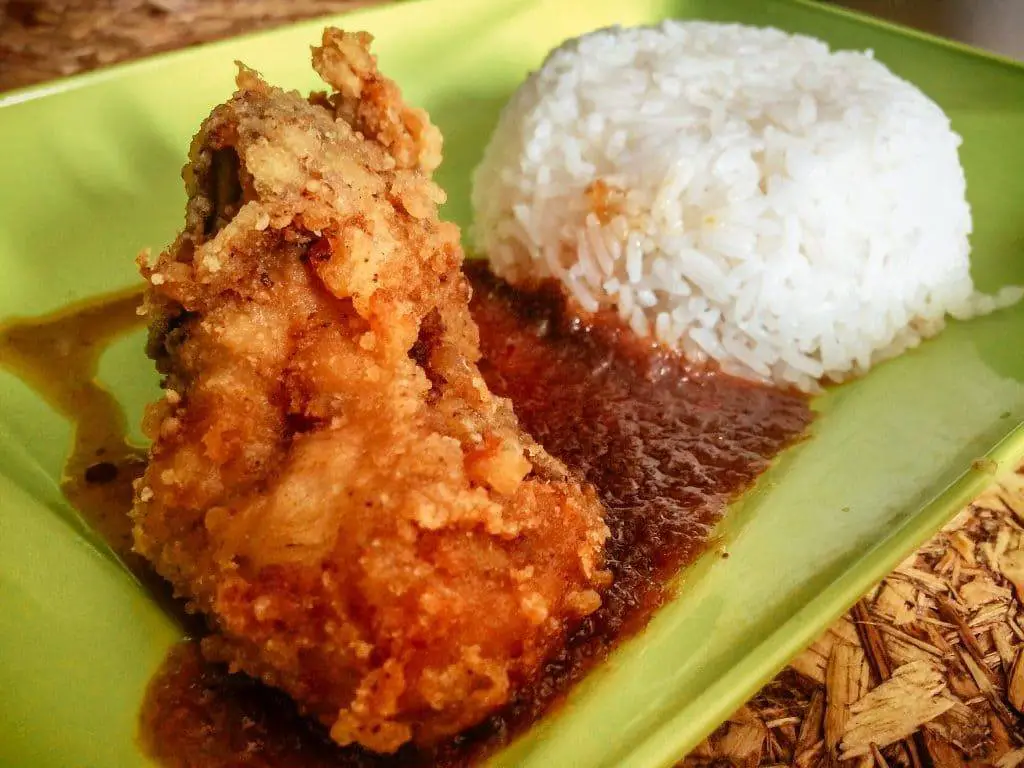
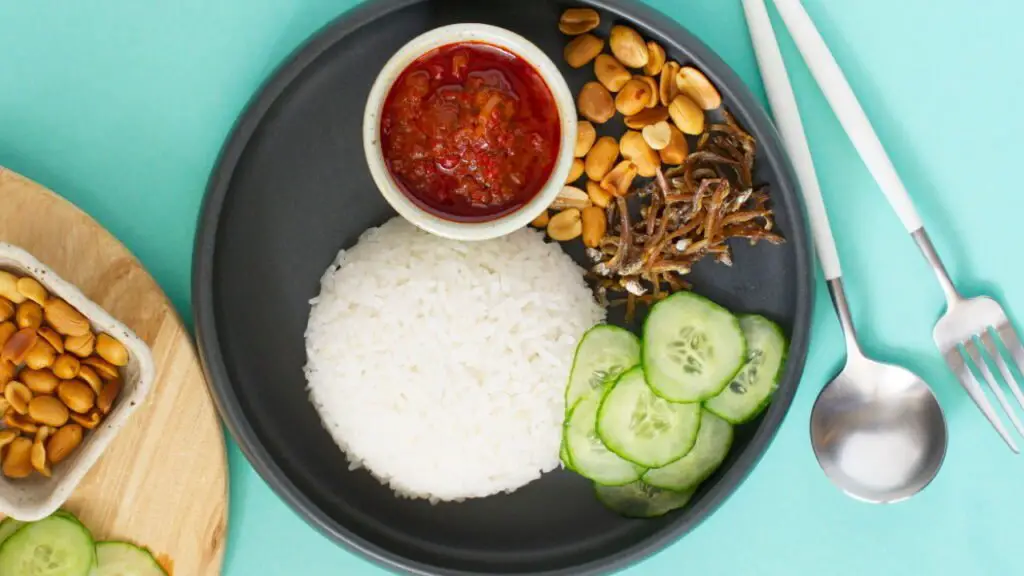
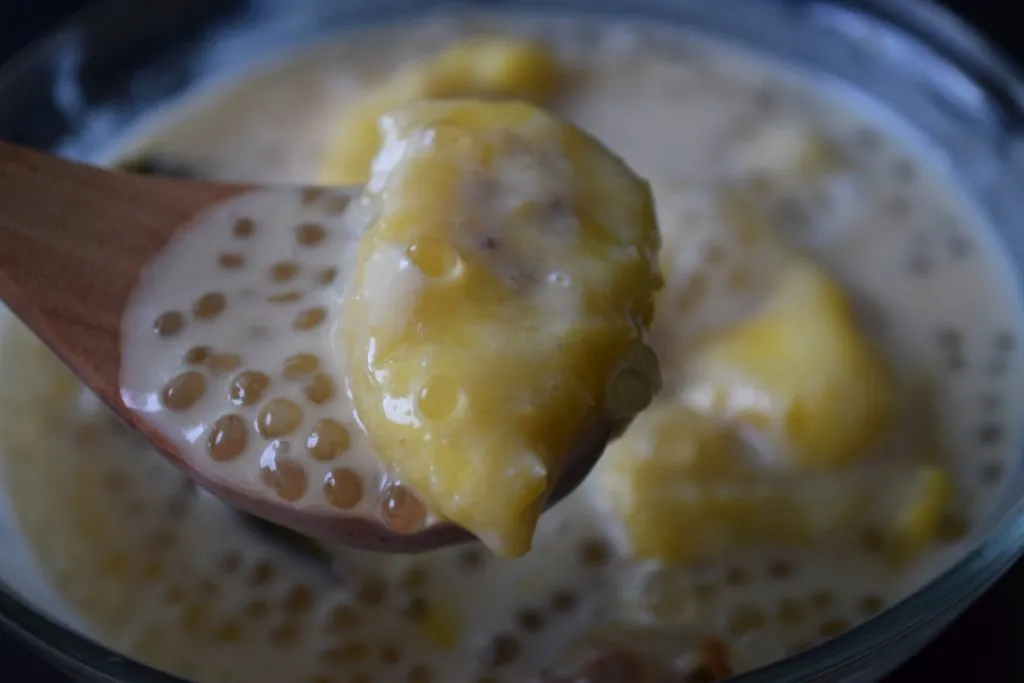
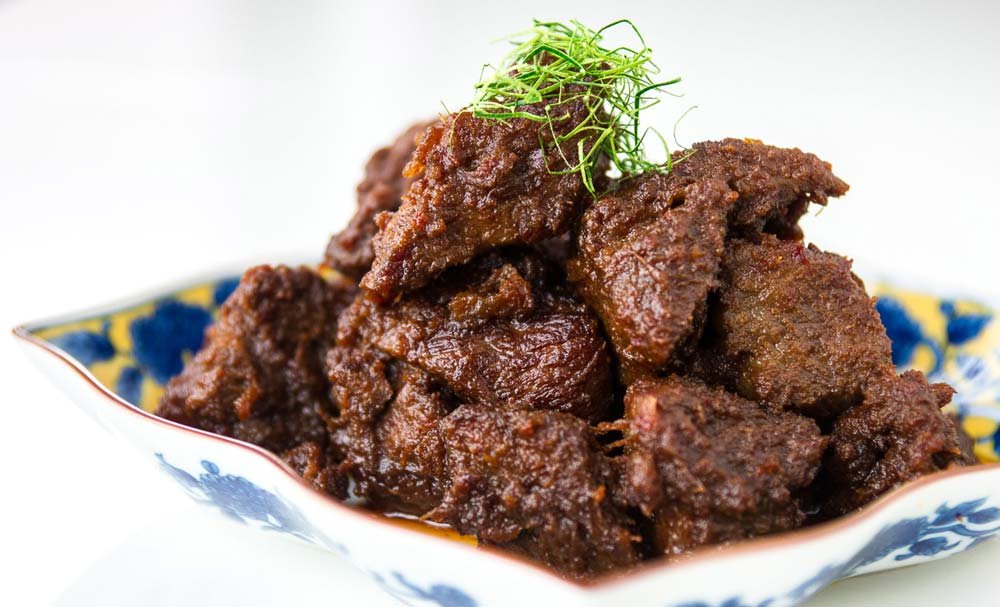
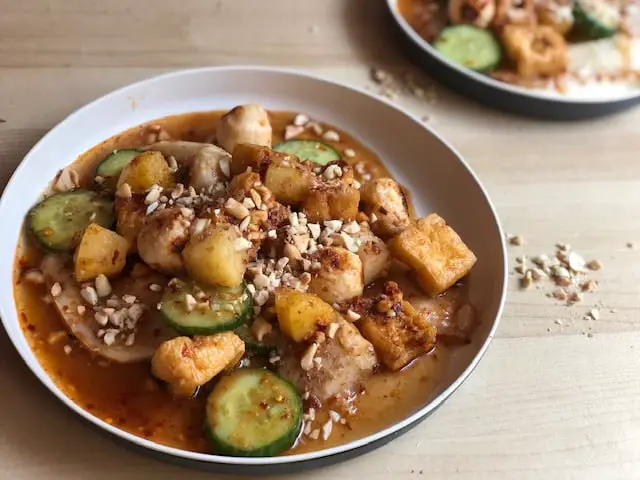
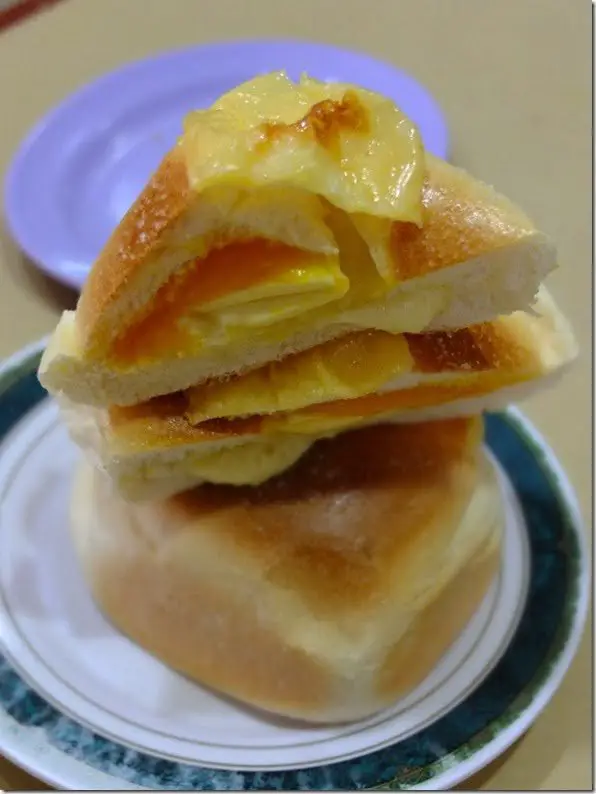
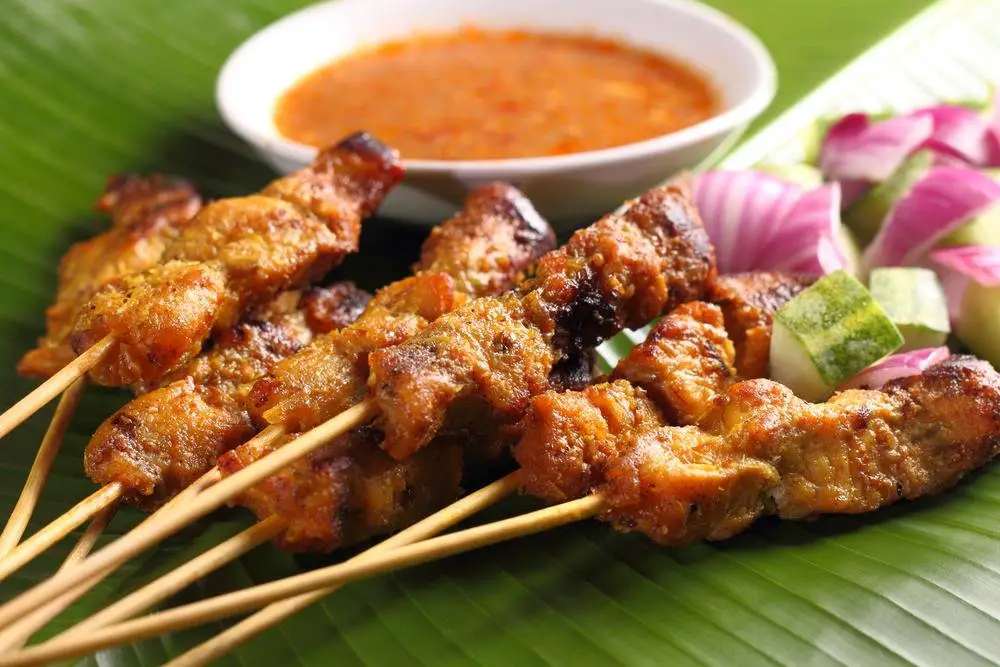

10 Fascinating Facts about Brunei
Brunei, the tiny sultanate nestled on Borneo, boasts more than just stunning rainforests and a rich history. Its culture and laws offer a glimpse into a fascinating world, with a surprising blend of tradition, modernity, and some truly unique quirks. Buckle up for 10 interesting facts about Brunei, some that might surprise you, tickle your funny bone, or leave you wanting to know more!
Oil & Opulence

Brunei is a tiny country sitting on a massive fortune! Oil wealth has led to a high standard of living for its citizens, with free healthcare and education. The opulent Istana Nurul Iman palace, the residence of the Sultan, is a testament to this wealth.
Weekend Warriors (at Work)
Brunei has a workweek unlike most. The weekend starts on Friday afternoon and extends through Saturday and Sunday. Imagine those long weekend brunches!
Keeping it Respectful

Public displays of affection are a big no-no in Brunei. A handshake or a polite bow is the best way to greet someone.
Feline Fines
Cat lovers beware! Littering in Brunei can land you a hefty fine, but harming a cat might just get you jail time!
Going Green (Literally)

Brunei is serious about protecting its environment. The sale and import of chewing gum is banned to keep the streets litter-free.
The Dress Code Debate
Brunei has a national dress code that encourages citizens to dress modestly. While not strictly enforced for tourists, it’s a sign of respect to cover your shoulders and knees when visiting religious sites.
Wildlife Wonders

Beyond the oil riches, Brunei boasts some incredible wildlife. Keep your eyes peeled for orangutans swinging through the rainforests or the world’s largest snake, the reticulated python, lurking in the swamps.
Night Market Munchies
Brunei comes alive at night with bustling night markets. These are the perfect places to sample local delicacies like satay (skewered meats) and ambuyat (a sour and spicy soup with sago flour).
Royal Regalia

Brunei’s Sultan is the longest-reigning monarch in the world! Catch a glimpse of the opulence surrounding the monarchy at the Sultan Omar Ali Saifuddin Mosque, a stunning example of Islamic architecture.
A Blend of Cultures
Brunei’s unique location has resulted in a fascinating cultural mix. Malay, Chinese, and indigenous influences weave together to create a society rich in traditions, languages, and of course, cuisine!
So, there you have it! 10 fascinating facts about Brunei that will leave you wanting to learn more about this unique and beautiful corner of the world.
Brunei’s History and the Effect it has had on the Cuisine
Brunei, a tiny sultanate nestled on Borneo, boasts a cuisine as rich and diverse as its history. Let’s embark on a delicious adventure through time, exploring how each historical period has left its mark on Bruneian plates!
Prehistory (Before 40,000 B.C.E.)
Imagine a time 40,000 years ago! The first Bruneians, the Austro-Melanesians, were carving their story into the walls of Niah Cave. These early inhabitants laid the foundation for the fascinating culture and cuisine we know today.
Early Kingdoms and Trade (6th Century)

Fast forward to the 6th century, and Brunei was bustling! The kingdom blossomed into a major trading hub, exchanging spices and precious woods with India and China. Hindu influences from the Majapahit Empire also added a touch of exotic flavor.
The Rise and Fall of an Empire (15th-17th Century)
The 15th century marked a turning point. Brunei embraced Islam and emerged as a powerful empire, its influence stretching across parts of Borneo and the Philippines. This “thalassocracy,” or seafaring empire, saw its cuisine enriched by the culinary traditions of its neighbors – Malaysia, Indonesia, India, China, and even Thailand and Japan.
Sadly, the 17th century brought challenges. Civil war, piracy, and European expansion chipped away at Brunei’s dominance.
The Colonial Era and Beyond (19th Century to Present)

The 19th century saw further territorial shifts. Brunei ceded land to the White Rajahs of Sarawak, resulting in its unique, divided landmass today.
Then, in 1888, it became a British protectorate. But amidst these changes, a new discovery transformed Brunei’s fortunes – oil! Oil extraction began in 1929, ushering in an era of prosperity.
Finally, in 1984, Brunei gained independence and charted its own course.
Brunei’s Modern Flavors

Today, Bruneian cuisine remains a delightful reflection of its rich past. Fresh fish and rice are the cornerstones of most meals, with beef a special occasion treat due to its cost. Following Islamic principles, the food is strictly halal, with no pork or alcohol.
Venturing Beyond the Usual
For a taste of something truly unique, head to the countryside! Here, skilled hunters bring in wild birds and deer, adding a touch of local flair to traditional dishes.
Must-Try Bruneian Dishes
- Ambuyat: The national treasure! This dish features a sticky ball of sago flour dipped into a vibrant, spicy, and sour gravy. Traditionally eaten with a special bamboo utensil called “candas”.
- Hati Buyah (Beef Lungs): Don’t be deterred by the name! These chewy and flavorful beef lungs are marinated and stir-fried, often served with ambuyat or as a topping for hearty soto soups.
- Nasi Katok: Need a quick and affordable bite? Look no further than nasi katok! This street food favorite combines plain rice, crispy fried chicken, and a dollop of spicy sambal relish, all wrapped in brown paper for easy enjoyment.
- Ayam Penyet: A delightful nod to Indonesian influence, ayam penyet features a marinated and fried chicken leg served with rice and a fiery chili sambal.
Beyond the Plate
When it comes to drinks, Bruneians quench their thirst with refreshing options like coconut milk, fruit juices, tea, and coffee
References
- Wikipedia – History of Brunei
- BBC News – Brunei Profile
- The Foreign Fork – Brunei Background and Food Culture
How Brunei’s Climate and Geography Influences Food
Buckle up for a taste bud tantalizing exploration of how Brunei’s location, climate, and geography all play a role in creating its unique culinary identity.
Island Paradise with a Twist
Imagine a tiny country, roughly the size of Trinidad and Tobago (5,765 km²), curiously divided into two parts by Malaysia. That’s Brunei! This unique geography isn’t the only surprise.
Most of the country is cloaked in pristine equatorial jungle, with pockets of flat coastal plains giving way to mountainous regions in the east and hilly lowlands in the west.
A Coastline Packed with Flavor

Brunei’s 161 km coastline isn’t just beautiful, it’s a treasure trove of fresh seafood! The cool waters of the South China Sea teem with fish, prawns, and crabs, all of which are staples in Bruneian cuisine.
Tropical Delights
Brunei basks in a steamy tropical climate with high humidity year-round. But don’t worry, there’s a refreshing twist! Monsoon winds help regulate the temperature, bringing drier periods from December to March and wetter months from June to September.
This tropical paradise is also a haven for exotic fruits! Durian, rambutan, and mangosteen flourish under the warm sun, adding their unique flavors to Bruneian cuisine.
From Rainforest to Plate

Brunei’s lush rainforests are more than just a pretty sight; they’re a source of culinary inspiration! Local cooks utilize a bounty of natural ingredients, including fragrant herbs and unique spices, to create aromatic dishes.
A Blend of Influences:
Brunei’s cuisine isn’t an island unto itself (pun intended!). Historical and cultural ties with neighboring Malaysia and Indonesia have left their mark on Bruneian flavors.
Think fragrant curries, savory rice dishes, and colorful kuih (traditional Malay cakes) – a delightful reminder of the rich tapestry woven by Brunei’s cultural exchange.
References
- Geography of Brunei – Wikipedia
- Brunei Weather, climate and geography – World Travel Guide
- Brunei geography, maps, climate, environment and terrain from Brunei …
- The Climate of Brunei – WorldAtlas
Understanding the Essence of Brunei Food Recipes
From the indigenous Dayak people to Chinese traders, Malay sultans, and Indian immigrants, each cultural group has left an indelible mark on Brunei’s food culture.
A Symphony of Ingredients
At the heart of Brunei’s cuisine lies its rich tapestry of ingredients. Blessed with fertile lands and bountiful seas, Brunei boasts a cornucopia of fresh produce and seafood.
From succulent prawns to sweet tropical fruits like durian and rambutan, Brunei’s ingredients are as diverse as they are flavorful.
Simplicity with a Touch of Elegance
What sets Brunei’s cuisine apart is its simplicity with a touch of elegance. Unlike its neighboring counterparts, Bruneian dishes are known for their subtle yet nuanced flavors. Take, for example, ambuyat, Brunei’s national dish.
Made from the sago palm’s starchy pith, ambuyat is served with an array of flavorful condiments like spicy sambal and tangy sour fruit sauce. Despite its simple ingredients, ambuyat is a testament to Brunei’s culinary finesse—a dish that celebrates the art of simplicity.
A Harmony of Sweet, Sour, and Spicy

Brunei’s cuisine is a symphony of flavors, where sweet, sour, and spicy dance in perfect harmony on the palate. From the fiery kick of sambal belacan to the tangy zest of lime, Bruneian dishes are a celebration of bold and vibrant flavors.
Even the simplest of dishes, like nasi katok—a humble plate of rice, fried chicken, and sambal—are bursting with flavor, leaving a lasting impression on those lucky enough to indulge.
Preserving Tradition in a Modern World
In a rapidly changing world, Brunei’s culinary heritage remains a beacon of tradition and authenticity. Despite the influx of global influences, Bruneians take great pride in preserving their culinary heritage, passing down recipes from generation to generation.
Whether it’s gathering around a communal table for a traditional Malay feast or savoring a bowl of laksa by the waterfront, food serves as a cornerstone of Bruneian culture—a timeless reminder of who they are and where they come from.
Embracing Diversity, Celebrating Unity
In Brunei, food is more than just sustenance—it’s a celebration of diversity and a testament to the bonds that unite us all.
Whether you’re sharing a meal with family and friends or exploring the bustling markets of Bandar Seri Begawan, every bite tells a story—a story of resilience, heritage, and the enduring spirit of Brunei.
Traditional Bruneian Food

Brunei’s culinary heritage is a tapestry woven with flavors from across the archipelago. From the vibrant markets of Bandar Seri Begawan to the cozy kitchens of rural villages, traditional Bruneian dishes offer a glimpse into the country’s rich cultural tapestry.
Let’s embark on a gastronomic journey and explore five iconic dishes that define the essence of Brunei’s culinary tradition.
Ambuyat: The Quintessential Bruneian Delicacy
No exploration of Brunei’s cuisine would be complete without mentioning ambuyat, the nation’s beloved national dish. Derived from the starchy pith of the sago palm, ambuyat is a unique culinary experience that embodies Brunei’s cultural identity.
Served with an array of flavorful condiments such as spicy sambal and tangy sour fruit sauce, ambuyat is a celebration of simplicity and finesse—a dish that delights both the palate and the soul.
Nasi Katok: A Humble Delight with Big Flavor
Simple yet satisfying, nasi katok is a staple of Bruneian street food culture. Consisting of fragrant rice, crispy fried chicken, and a generous dollop of spicy sambal, this humble dish packs a punch of flavor that will leave you craving for more.
Whether enjoyed as a quick snack on the go or as a hearty meal shared with friends, nasi katok is a testament to Brunei’s love affair with bold and vibrant flavors.
Roti Kahwin: A Sweet Indulgence
Roti kahwin, which translates to “married bread” in Malay, is a beloved Bruneian treat that combines the rich flavors of butter and kaya jam. This delightful snack is often enjoyed with a cup of hot tea or coffee, making it the perfect indulgence for lazy afternoons or breakfast gatherings with loved ones.
With its buttery richness and sweet aroma, roti kahwin is a culinary delight that is sure to tantalize your taste buds.
Gadong Rojak: A Flavorful Medley of Textures
Gadong rojak is a popular Bruneian salad that boasts a colorful medley of textures and flavors. Made from a mix of fruits, vegetables, and crispy fritters, Gadong rojak is dressed in a sweet and tangy sauce that elevates its taste to new heights.
With each bite, you’ll experience a symphony of flavors—from the crunch of fresh cucumbers to the sweetness of ripe mangoes—a true testament to Brunei’s culinary creativity and ingenuity.
Brunei’s National Dish
As the national dish of Brunei, Ambuyat holds a special place in the hearts and palates of its people, embodying the essence of Bruneian cuisine. Let’s embark on a journey to unravel the secrets of this iconic delicacy and understand why it’s more than just a meal—it’s a cultural institution.
What is Ambuyat?
Ambuyat is a unique culinary creation derived from the starchy pith of the sago palm. This translucent, gelatinous substance is transformed into a thick, sticky paste, which forms the centerpiece of the Ambuyat dining experience.
Served alongside an array of flavorful condiments such as spicy sambal, tangy sour fruit sauce, and aromatic bamboo shoots, Ambuyat is a celebration of simplicity and elegance—a dish that invites diners to savor the essence of Brunei’s culinary heritage.
The Cultural Significance of Ambuyat

Beyond its culinary appeal, Ambuyat carries profound cultural significance for the people of Brunei. Historically, Ambuyat was a staple food for Brunei’s indigenous communities, providing sustenance and nourishment in times of scarcity.
Today, Ambuyat remains a symbol of unity and togetherness, bringing families and friends together to share a communal meal and celebrate their cultural heritage.
The Ambuyat Dining Experience
Partaking in an Ambuyat feast is more than just a culinary experience—it’s a journey of exploration and discovery. Traditionally served in a communal setting, diners gather around a central table adorned with an array of condiments and accompaniments.
Using special utensils known as chandas, diners dip into the velvety Ambuyat paste, coating it with their favorite condiments before delicately savouring each mouthful. The dining experience is not just about the food; it’s about the camaraderie, laughter, and shared memories that accompany every bite.
Preserving Tradition in a Modern World
In a rapidly changing world, Ambuyat serves as a timeless reminder of Brunei’s commitment to preserving its cultural heritage. Despite the influx of global influences, Bruneians take great pride in upholding the traditions and rituals associated with Ambuyat dining.
From family gatherings to festive celebrations, Ambuyat remains a fixture on Brunei’s culinary landscape, bridging the gap between past and present generations.
The Most Popular Bruneian Food Recipes

From the bounty of the South China Sea to the heart of the rainforest, each dish tells a story. Let’s tantalize your taste buds with 10 of the most popular Bruneian recipes, ready to spark your culinary wanderlust:
Ambuyat (National Dish)
Dive into Brunei’s national treasure! Imagine a sticky ball of sago flour, dipped into a vibrant and flavorful gravy that’s both sour and spicy. Traditionally scooped up with a special bamboo utensil called “candas,” ambuyat is a unique and delicious experience.
Hati Buyah (Beef Lungs)
Don’t be intimidated by the name! These beef lungs are surprisingly delicious. Marinated and stir-fried, they offer a chewy and flavorful experience. Enjoy them with ambuyat or as a topping for hearty soto soups.
Nasi Katok (Rice Knock)
Craving a quick and satisfying bite? Nasi katok is your answer! This street food favorite features fluffy white rice paired with crispy fried chicken and a dollop of spicy sambal relish. Affordable, convenient, and bursting with flavor, nasi katok is a Bruneian staple.
Ayam Penyet (Smashed Chicken)
A delightful nod to Indonesian influence, ayam penyet features a marinated and fried chicken leg. The “penyet” part comes in with a satisfying smash, tenderizing the meat. Served with rice and a fiery chili sambal, this dish is a flavor explosion.
Kelupis (Crispy Fritters)
Imagine bite-sized pockets of pure deliciousness! Kelupis are crispy fritters typically made with prawns, although other variations might include vegetables or fish. Served with a sweet and spicy dipping sauce, they’re perfect for sharing or enjoying as a light snack.
Kuih (Sweet Treats)
No Bruneian meal is complete without a touch of sweetness. Kuih are bite-sized Malay cakes available in a dazzling array of colors, flavors, and textures. From the glutinous texture of kuih tepung to the delicate sweetness of kuih lapis, there’s a kuih to tempt every palate.
Hinava (Ceviche Delight)
For seafood lovers with a sense of adventure, hinava is a must-try. This unique dish features raw fish or seafood cured in citrus juices and chilies, resulting in a refreshing and tangy salad.
Mi Kocok (Spicy Noodles)
Calling all noodle enthusiasts! Mi kocok features yellow egg noodles swimming in a fragrant and slightly spicy coconut curry broth. Toppings can vary, but often include bean sprouts, hard-boiled egg, and fried shallots.
Lawar (Salad with a Twist)
Lawar is a unique salad with a surprising ingredient – minced meat! Usually featuring vegetables, spices, and either chicken, beef, or seafood, lawar offers a complex combination of textures and flavors.
Bubur Kacang (Sweet Bean Soup)
End your Bruneian culinary adventure on a sweet note with bubur kacang. This heartwarming dessert soup features creamy mung beans, coconut milk, and palm sugar, offering a comforting and delicious finish to your meal.
So, there you have it! 10 tempting tastes of Brunei, each waiting to be explored.
Exploring Brunei Street Food

Brunei’s culinary scene isn’t confined to fancy restaurants. The true heart of its flavors beats in the vibrant street food stalls, where sizzling aromas mingle with the chatter of locals. These open-air havens offer a taste of Bruneian culture, a chance to connect with the community, and of course, some incredibly delicious food!
A Feast for the Senses:
Imagine strolling through a bustling night market (locally known as “Pasar Malam”). The air is thick with the smoky allure of grilling meats, the tangy sweetness of fresh fruits, and the gentle hum of conversation.
Colorful stalls overflow with an enticing array of dishes, each promising a unique taste sensation. This is the magic of Bruneian street food!
Must-Try Street Food Delights
- Nasi Katok (King of the Streets): This undisputed champion reigns supreme in the Bruneian street food scene. Nasi katok, literally translated as “knock rice,” is a simple yet satisfying dish featuring fluffy white rice, crispy fried chicken, and a dollop of spicy sambal relish. Affordable, convenient, and packed with flavor, it’s a must-try for any street food adventurer.
- Satay (Skewered Goodness): Savor tender, marinated meats like chicken, beef, or even seafood, skewered and grilled to perfection. These bite-sized treats are typically dipped in a peanut sauce or a spicy chili sauce, offering a delightful combination of sweet, savory, and spicy.
- Kuih (A Rainbow of Sweetness): No Bruneian street food experience is complete without a touch of sweetness. Kuih are bite-sized Malay cakes that come in a dazzling array of colors, flavors, and textures. From the glutinous texture of kuih tepung to the delicate sweetness of kuih lapis, there’s a kuih to tempt every palate.
- Cendol (Iced Refreshment): Beat the Bruneian heat with a refreshing bowl of cendol. This icy dessert features green rice flour jelly noodles swimming in a fragrant coconut milk base, with shaved ice and palm sugar adding a touch of sweetness. Toppings like red beans and fresh jackfruit might also be included.
- Teh Tarik (Pulled Tea): Quench your thirst with this frothy and flavorful drink. Teh tarik, literally translated as “pulled tea,” involves pouring the tea back and forth between two containers, creating a light and airy texture. It’s typically enjoyed hot with condensed milk for a touch of sweetness.
Where to Find the Best Street Food
While you can find street food stalls scattered throughout Brunei, certain cities boast a particularly vibrant scene. Bandar Seri Begawan, the capital city, is a great starting point.
The Gadong Night Market is a popular spot, with a wide variety of vendors offering everything from savory snacks to sweet treats. Kuala Belait, Brunei’s second-largest city, also has a lively night market scene, perfect for exploring local flavors.
Exploring Beyond the Plate
Bruneian street food isn’t just about the food itself. It’s about immersing yourself in the local culture, soaking up the atmosphere, and experiencing Bruneian hospitality firsthand. So, grab a plate, pull up a plastic chair, and get ready to embark on a delicious Bruneian street food adventure!
Exploring Brunei Ingredients: The Flavors of Bruneian food

Brunei boasts an abundance of fresh, locally-sourced ingredients that form the backbone of its rich and diverse cuisine. Let’s delve into the main ingredients that define Bruneian cooking and discover the flavors that make it truly unique.
Seafood: Fresh Catch from the Bruneian Waters
With its extensive coastline and thriving marine ecosystem, it’s no surprise that seafood plays a starring role in Brunei’s cuisine. From succulent prawns and plump crabs to sweet snapper and flaky mackerel, Brunei’s waters teem with an array of delicious treasures waiting to be savored.
Whether grilled to perfection, steamed with aromatic herbs and spices, or simmered in rich coconut curry, seafood is a cornerstone of Bruneian culinary tradition.
Rice: The Staple Grain of Bruneian Meals
Rice holds a special place in Bruneian culture, serving as the cornerstone of virtually every meal. Whether it’s fragrant jasmine rice, sticky glutinous rice, or hearty brown rice, rice forms the foundation upon which Brunei’s flavorful dishes are built.
From savory rice dishes like nasi lemak and nasi goreng to sweet treats like pulut panggang and kuih koci, rice is an essential ingredient that adds texture, substance, and satisfaction to Bruneian cuisine.
Tropical Fruits: Nature’s Sweet Bounty
Brunei’s tropical climate provides the perfect conditions for a wide variety of exotic fruits to flourish. From the spiky exterior of the durian to the velvety flesh of the rambutan, Brunei’s markets are brimming with an abundance of colorful and fragrant fruits that add a burst of freshness to its cuisine.
Whether enjoyed on their own as a refreshing snack or incorporated into savory dishes and desserts, tropical fruits are a quintessential ingredient in Bruneian cooking, adding sweetness, tanginess, and vibrancy to every bite.
Herbs and Spices: A Symphony of Aromas
No Bruneian dish is complete without a medley of aromatic herbs and spices that elevate its flavors to new heights. From the fiery heat of chili peppers and the citrusy zing of lemongrass to the earthy warmth of turmeric and the fragrant sweetness of pandan leaves, Brunei’s spice racks are stocked with an array of ingredients that tantalize the taste buds and awaken the senses.
Whether used to marinade meats, infuse broths, or add depth to sauces, herbs and spices are the secret weapons in Brunei’s culinary arsenal.
Coconut: Creamy Goodness from the Tropics
Coconut is another key ingredient that features prominently in Bruneian cuisine, adding richness, creaminess, and a hint of sweetness to dishes both savory and sweet.
From creamy coconut curries and luscious coconut milk desserts to refreshing coconut water drinks, coconut is a versatile ingredient that adds depth and complexity to Brunei’s culinary creations.
What are the Health Implications of Brunei Cuisine?

Brunei’s cuisine offers a delightful tapestry of flavors, but like any story, it has two sides. While delicious, there’s also a need to address the impact of certain dietary trends on the population’s health. Let’s delve into the current landscape and explore how Brunei is navigating this challenge.
Obesity on the Rise
One of the major concerns is the growing prevalence of obesity. Nearly 1 in 5 adult women (18.2%) and over 15% of men (15.2%) in Brunei grapple with obesity. These numbers are worryingly higher than the regional averages for Southeast Asia.
Diabetes and Heart Health
Another concern is diabetes. While Brunei is on track for managing diabetes in women, the same can’t be said for men. Furthermore, the high obesity rates suggest a potential link to heart health and cholesterol levels, although specific data on these areas is limited.
Maternal and Child Health
There’s positive news on the maternal and child nutrition front. Brunei is on track for several key targets related to infant and young child nutrition. However, there’s still work to be done in reducing anemia among women of reproductive age.
Childhood Nutrition
Brunei is winning the battle against childhood stunting, with only 19.7% of children under 5 affected. However, data on wasting (a severe form of malnutrition) is lacking. Childhood overweight is also a concern, affecting 8.3% of children.
Building a Healthier Tomorrow
Despite these challenges, Brunei is actively working towards a healthier future. The National Dietary Guidelines for Healthy Eating in Brunei Darussalam emphasize balanced nutrition, portion control, and moderation.
These guidelines aim to empower Bruneians to make informed food choices and adopt healthier lifestyles.
The Takeaway
Brunei’s culinary scene is a vibrant part of its culture, but achieving a healthy balance on the plate is crucial. By addressing current trends and promoting healthy habits, Brunei is paving the way for a healthier and more balanced future for its population.
References
- Global Nutrition Report | Country Nutrition Profiles – Brunei Darussalam
- Diabetes one of Brunei’s main challenges, says Health Minister
- Diabetes prevalence (% of population ages 20 to 79) – Brunei Darussalam
- National Dietary Guidelines for Healthy Eating Brunei Darussalam
Bruneian food Recipes to Try at Home
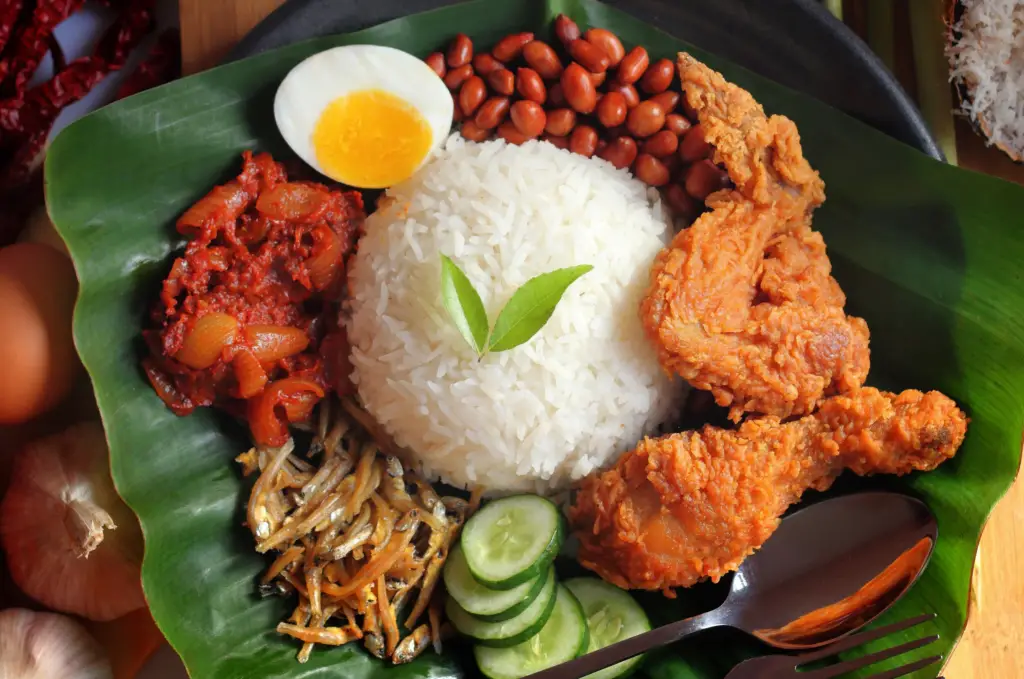
Welcome to a culinary adventure that will transport you to the vibrant streets and bustling markets of Brunei, right from the comfort of your own home. In this chapter, we invite you to explore the rich tapestry of Bruneian cuisine through a collection of authentic recipes that capture the essence of this Southeast Asian gem.
From fragrant rice dishes infused with exotic spices to succulent seafood creations that celebrate the bounty of the Bruneian waters, each recipe offers a taste of the diverse flavors and cultural heritage that define Brunei’s culinary landscape.
Whether you’re a seasoned home cook looking to expand your culinary repertoire or an adventurous foodie eager to explore new flavors, these Brunei recipes promise to delight your taste buds and transport you to a world of gastronomic delights. So, roll up your sleeves, gather your ingredients, and get ready to embark on a culinary journey through the flavors of Brunei.
Bruneian food – Ambuyat (Brunei’s National Dish)

As a traveling food blogger with a passion for exploring culinary delights, I’m thrilled to introduce you to one of Brunei’s most iconic dishes—Ambuyat. Originating from Brunei’s rich cultural tapestry, Ambuyat is more than just a meal; it’s a celebration of tradition, unity, and the vibrant flavors of Southeast Asia.
History and Background
Ambuyat holds deep cultural significance in Brunei, serving as the nation’s proud culinary symbol. Derived from the starchy pith of the sago palm, Ambuyat has been a staple food for Brunei’s indigenous communities for centuries. Traditionally enjoyed as a communal dish, Ambuyat embodies the spirit of togetherness and camaraderie that is central to Brunei’s cultural identity.
Bruneian food – Ambuyat Ingredients
- Sago starch: 500g (approximately 1.1 lb)
- Water: 1 liter (approximately 4 cups)
- Condiments (suggested):
- Spicy sambal
- Tangy sour fruit sauce
- Bamboo shoots
Bruneian food – Ambuyat Recipe
Ingredients Preparation:
- Prepare the Sago Starch: In a large mixing bowl, combine the sago starch with water. Stir well until the mixture forms a thick, gelatinous paste. Set aside.
Cooking Instructions:
- Boil Water: In a large pot, bring the water to a boil over medium heat.
- Cook the Ambuyat: Once the water is boiling, gradually add the prepared sago starch paste to the pot, stirring constantly to prevent lumps from forming. Continue cooking and stirring for about 10-15 minutes, until the mixture thickens and becomes translucent.
- Form Ambuyat Logs: Using a special utensil called a chandas or a pair of chopsticks, twirl a small amount of the cooked Ambuyat around the utensil to form a sticky, gelatinous log.
- Serve with Condiments: Transfer the Ambuyat logs to individual serving plates. Serve immediately with a selection of condiments such as spicy sambal, tangy sour fruit sauce, and bamboo shoots.
Serving Information
- Serves: 4 people
- Estimated Cooking Time: 20 minutes
Nutritional Information
- Calories per serving: Approximately 200 kcal
- Fat: 0g
- Carbohydrates: 50g
- Protein: 0g
With its simple yet elegant preparation and rich cultural significance, Ambuyat is a dish that truly encapsulates the essence of Brunei’s culinary heritage.
Whether you’re enjoying it in the heart of Brunei or recreating it in your own kitchen, Ambuyat promises to delight your taste buds and transport you to the vibrant streets of Southeast Asia.
Bruneian food – Nasi Lemak (Fragrant Rice Served with Various Accompaniments)

I’m excited to share with you the flavors of Brunei through one of its most beloved dishes—Nasi Lemak. Originating from the Malay Peninsula but embraced wholeheartedly by Brunei, Nasi Lemak is a quintessential Southeast Asian delight that combines fragrant rice with a tantalizing array of accompaniments.
History and Background
Nasi Lemak’s origins can be traced back to the Malay Peninsula, where it was traditionally eaten as a hearty breakfast by farmers and laborers. Over time, this humble dish evolved into a culinary sensation that transcended borders and became a staple in Brunei’s culinary repertoire.
Today, Nasi Lemak is cherished for its aromatic rice, creamy coconut milk, and flavorful accompaniments, making it a beloved comfort food enjoyed by Bruneians of all ages.
Bruneian food – Nasi Lemak Ingredients
- Jasmine rice: 2 cups
- Coconut milk: 1 cup
- Pandan leaves: 2, tied into a knot
- Salt: 1 teaspoon
- Cucumber: 1, sliced
- Hard-boiled eggs: 4, halved
- Fried anchovies (ikan bilis): 1 cup
- Roasted peanuts: 1/2 cup
- Sambal chili paste: 1/2 cup
- Banana leaves (optional, for serving)
Bruneian food – Nasi Lemak Recipe
Ingredients Preparation:
- Rinse the Rice: Rinse the jasmine rice under cold water until the water runs clear. Drain well.
- Cook the Rice: In a rice cooker or pot, combine the rinsed rice, coconut milk, pandan leaves, and salt. Cook according to the rice cooker’s instructions or bring to a boil, then reduce heat to low and simmer covered for about 15-20 minutes, until the rice is cooked and fluffy.
- Prepare Accompaniments: While the rice is cooking, prepare the accompaniments by slicing the cucumber, halving the hard-boiled eggs, and arranging the fried anchovies, roasted peanuts, and sambal chili paste in separate bowls.
Cooking Instructions:
- Serve the Nasi Lemak: Once the rice is cooked, fluff it with a fork and remove the pandan leaves. Serve the fragrant rice on a platter or individual plates, accompanied by the sliced cucumber, hard-boiled eggs, fried anchovies, roasted peanuts, and sambal chili paste.
- Optional Serving Method: For an authentic touch, line individual serving plates with banana leaves before adding the rice and accompaniments.
Serving Information
- Serves: 4 people
- Estimated Cooking Time: 30 minutes
Nutritional Information
- Calories per serving: Approximately 400 kcal
- Fat: 15g
- Carbohydrates: 60g
- Protein: 10g
Nasi Lemak is more than just a dish; it’s a culinary journey through the vibrant flavors of Brunei. Whether enjoyed for breakfast, lunch, or dinner, Nasi Lemak promises to delight your taste buds and transport you to the heart of Southeast Asia with every fragrant bite.
Bruneian food – Rendang (Spicy Meat Stew)

Hey, fellow food adventurers! Today, we’re delving into the heart of Brunei’s rich culinary tapestry with a mouthwatering dish: Rendang. Bursting with bold flavors and aromatic spices, this spicy meat stew is a true testament to Brunei’s gastronomic heritage.
So, let’s embark on a culinary journey through the streets of Brunei and uncover the secrets behind this beloved dish.
A Taste of Brunei’s History and Culture
Rendang holds a special place in Brunei’s culinary tradition. Originating from the Minangkabau ethnic group of Indonesia, this dish has been embraced and adapted across Southeast Asia, including Brunei.
Its roots trace back to the Sumatran region, where it was traditionally served during ceremonial occasions and festive celebrations. Over time, Rendang has evolved into a staple dish enjoyed by Bruneians and visitors alike, showcasing the region’s diverse flavors and cultural influences.
Bruneian food – Rendang Ingredients:
- 1 kg beef, thinly sliced
- 4 cups coconut milk
- 4 stalks lemongrass, bruised
- 6 kaffir lime leaves
- 5 tbsp tamarind paste
- 4 tbsp palm sugar
- 1 cup grated coconut, toasted
- 6 shallots, finely chopped
- 6 cloves garlic, minced
- 5 red chilies, deseeded and sliced
- 3-inch piece galangal, thinly sliced
- 2-inch piece ginger, thinly sliced
- 3 tbsp vegetable oil
- Salt to taste
Bruneian food – Rendang Recipe (Serves 6):
Preparing Ingredients:
- Prepare the Beef: Thinly slice the beef and set aside.
- Toast Coconut: In a dry pan, toast the grated coconut over medium heat until golden brown. Set aside.
- Prepare Aromatics: Finely chop the shallots, mince the garlic, deseed and slice the red chilies, and thinly slice the galangal and ginger.
Cooking Instructions:
- Sauté Aromatics: Heat vegetable oil in a large pot over medium heat. Add shallots, garlic, red chilies, galangal, and ginger. Sauté until fragrant.
- Add Beef: Add the sliced beef to the pot and cook until browned.
- Incorporate Coconut Milk: Pour in the coconut milk and bring to a simmer.
- Add Flavorings: Add lemongrass, kaffir lime leaves, tamarind paste, palm sugar, and toasted coconut to the pot. Stir well to combine.
- Simmer: Reduce heat to low and let the stew simmer for 2-3 hours, stirring occasionally, until the beef is tender and the sauce has thickened.
- Adjust Seasoning: Taste and adjust seasoning with salt if needed.
- Serve: Once the beef is tender and the sauce has reached your desired consistency, remove from heat. Serve hot with steamed rice or your favorite accompaniments.
Estimated Cooking Time: 3 hours
Nutritional Information (per serving):
- Calories: 540 kcal
- Carbohydrates: 20g
- Protein: 30g
- Fat: 40g
- Fiber: 5g
Now that you’ve got the recipe for Rendang, it’s time to bring a taste of Brunei into your kitchen! Get ready to savor the bold flavors and spices of this beloved dish. Happy cooking, and bon appétit!
Bruneian food – Nasi Katok (Rice with Fried Chicken)

Hey there, food enthusiasts! Today, we’re diving deep into the flavors of Brunei with a classic dish that’s a true favorite among locals: Nasi Katok. This simple yet satisfying meal consists of fragrant rice paired with crispy fried chicken, offering a delightful taste of Brunei’s culinary landscape.
Let’s uncover the story behind this beloved dish and learn how to recreate it in your own kitchen!
A Glimpse into Brunei’s Culinary Heritage
Nasi Katok has humble beginnings rooted in Brunei’s bustling street food scene. The dish’s name, “Nasi Katok,” actually translates to “knock rice” in Malay, originating from the practice of knocking on the vendor’s door to request a meal.
Traditionally served by street vendors and roadside stalls, Nasi Katok embodies the simplicity and accessibility of Bruneian cuisine, making it a staple comfort food for many locals.
Bruneian food – Nasi Katok Ingredients:
- 2 cups jasmine rice
- 4 boneless, skinless chicken thighs
- 2 cups all-purpose flour
- 2 eggs, beaten
- 2 cups cooking oil (for frying)
- Salt and pepper to taste
- Sambal (chili paste), for serving
- Cucumber slices, for garnish
Bruneian food – Nasi Katok Recipe (Serves 4):
Preparing Ingredients:
- Rinse Rice: Rinse jasmine rice under cold water until the water runs clear. Drain and set aside.
- Prepare Chicken: Season chicken thighs with salt and pepper on both sides.
Cooking Instructions:
- Cook Rice: In a rice cooker or pot, cook the jasmine rice according to package instructions.
- Coat Chicken: Dredge each seasoned chicken thigh in flour, then dip into the beaten eggs, ensuring they’re fully coated.
- Fry Chicken: Heat cooking oil in a frying pan over medium-high heat. Carefully add the coated chicken thighs and fry until golden brown and cooked through, about 6-8 minutes per side. Transfer to a paper towel-lined plate to drain excess oil.
- Serve: To serve, place a portion of cooked rice on each plate, top with a crispy fried chicken thigh, and garnish with cucumber slices. Serve hot with sambal on the side for extra flavor.
Estimated Cooking Time: 30 minutes
Nutritional Information (per serving):
- Calories: 580 kcal
- Carbohydrates: 65g
- Protein: 25g
- Fat: 25g
- Fiber: 2g
Now that you have the inside scoop on Nasi Katok, why not bring a taste of Brunei into your own kitchen? Whether you’re craving a quick and tasty meal or looking to explore the flavors of Southeast Asia, Nasi Katok is sure to satisfy your culinary cravings.
Give it a try and let the flavors transport you to the vibrant streets of Brunei!
Bruneian food – Rojak (Fruit and Vegetable Salad)

Rojak. Bursting with the flavors of tropical fruits and crunchy vegetables, this salad is a true delight for the senses. Join me as we uncover the origins of Rojak and learn how to whip up this tantalizing dish at home!
A Taste of Brunei’s Culinary Diversity
Rojak is a beloved salad that hails from Southeast Asia, with variations found in countries like Malaysia, Singapore, and Indonesia, as well as Brunei. In Brunei, Rojak is a popular street food dish enjoyed by locals and visitors alike.
Its name, “Rojak,” actually translates to “mixture” or “assortment” in Malay, perfectly encapsulating the diverse range of ingredients that come together to create this flavorful salad. With its combination of sweet, sour, and savory elements, Rojak perfectly reflects the rich cultural tapestry of Brunei.
Bruneian food – Rojak Ingredients:
- 2 cups jicama (yam bean), julienned
- 2 cups cucumber, julienned
- 1 cup pineapple, cubed
- 1 cup firm tofu, cubed and fried
- 1 cup bean sprouts
- 1/2 cup roasted peanuts, crushed
- 1/4 cup dried shrimp, soaked and drained (optional)
- 1/4 cup fried shallots (optional)
- Fresh cilantro leaves, for garnish
For the Dressing:
- 1/4 cup tamarind paste
- 2 tbsp palm sugar
- 2 tbsp soy sauce
- 1 tbsp shrimp paste (belacan)
- 1-2 red chilies, chopped (adjust according to heat preference)
- 2 cloves garlic, minced
- Juice of 1 lime
Bruneian food – Rojak Recipe (Serves 4):
Preparing Ingredients:
- Prep Vegetables: Julienne the jicama and cucumber, cube the pineapple, and fry the tofu until golden brown. Set aside.
- Soak Dried Shrimp: If using dried shrimp, soak them in water for about 10 minutes, then drain.
Making the Dressing:
- Prepare Tamarind Paste: In a small bowl, combine tamarind paste with warm water and let it sit for a few minutes. Strain the mixture to remove any seeds or fibers.
- Mix Ingredients: In a separate bowl, whisk together tamarind paste, palm sugar, soy sauce, shrimp paste, chopped red chilies, minced garlic, and lime juice until well combined.
Assembling the Salad:
- Combine Ingredients: In a large mixing bowl, toss together the jicama, cucumber, pineapple, fried tofu, bean sprouts, and soaked dried shrimp (if using).
- Add Dressing: Pour the prepared dressing over the salad and toss until everything is evenly coated.
- Garnish: Sprinkle crushed peanuts and fried shallots over the salad, and garnish with fresh cilantro leaves.
Estimated Preparation Time: 20 minutes
Estimated Cooking Time: 10 minutes
Nutritional Information (per serving):
- Calories: 280 kcal
- Carbohydrates: 25g
- Protein: 10g
- Fat: 16g
- Fiber: 7g
Get ready to tantalize your taste buds with the vibrant flavors of Rojak! Whether you’re craving a light and refreshing snack or a flavorful side dish, this Bruneian salad is sure to hit the spot.
So gather your ingredients, whip up that tangy dressing, and enjoy a taste of Southeast Asia right in your own kitchen!
Bruneian food – Satay (Grilled Skewered Meats)

Hey, foodie adventurers! Today, we’re delving into the vibrant food culture of Brunei with a mouthwatering dish that’s sure to ignite your taste buds: Satay. Originating from Southeast Asia, Satay holds a special place in Brunei’s culinary scene, reflecting the region’s rich history and diverse flavors. Join me as we uncover the story behind this beloved dish and learn how to recreate it in your own kitchen!
A Glimpse into Satay’s Origins
Satay has its roots in Indonesia but has been embraced and adapted by various countries in the region, including Brunei. This popular street food dish is believed to have originated from the Indonesian island of Java, where it was traditionally served as a celebratory food during festivals and special occasions. Over time, Satay has evolved into a versatile dish enjoyed across Southeast Asia, featuring succulent skewered meats grilled to perfection and served with a flavorful dipping sauce.
Bruneian food – Satay Ingredients:
- 500g chicken breast or beef, thinly sliced
- 1/4 cup soy sauce
- 2 tbsp honey
- 2 cloves garlic, minced
- 1 tbsp ginger, minced
- 1 tbsp lemongrass, minced
- 1 tsp ground turmeric
- 1 tsp ground coriander
- 1/2 tsp ground cumin
- Bamboo skewers, soaked in water
- Vegetable oil, for grilling
For the Peanut Sauce:
- 1/2 cup peanut butter
- 1/4 cup coconut milk
- 2 tbsp soy sauce
- 1 tbsp lime juice
- 1 tbsp brown sugar
- 1 clove garlic, minced
- 1 tsp chili paste (optional)
- Water (as needed to adjust consistency)
Bruneian food – Satay Recipe (Serves 4):
Preparing Ingredients:
- Slice Meat: Thinly slice chicken breast or beef and set aside.
- Soak Skewers: Soak bamboo skewers in water for at least 30 minutes to prevent burning.
Marinating the Meat:
- Prepare Marinade: In a bowl, mix together soy sauce, honey, minced garlic, minced ginger, minced lemongrass, ground turmeric, ground coriander, and ground cumin.
- Marinate Meat: Place the sliced meat in the marinade, ensuring it is well coated. Cover and refrigerate for at least 1 hour, or overnight for best results.
Making the Peanut Sauce:
- Mix Ingredients: In a small saucepan, combine peanut butter, coconut milk, soy sauce, lime juice, brown sugar, minced garlic, and chili paste (if using).
- Heat and Stir: Heat the saucepan over low heat, stirring continuously until the ingredients are well combined and the sauce is smooth. If too thick, add water gradually to reach desired consistency.
Grilling the Satay:
- Thread Skewers: Thread marinated meat onto soaked bamboo skewers, dividing evenly.
- Preheat Grill: Preheat grill or grill pan over medium-high heat and lightly brush with vegetable oil.
- Grill Satay: Grill the skewers for 2-3 minutes on each side, or until the meat is cooked through and slightly charred.
- Serve: Serve hot with the prepared peanut sauce on the side for dipping.
Estimated Preparation Time: 15 minutes
Estimated Cooking Time: 10 minutes
Nutritional Information (per serving, including peanut sauce):
- Calories: 380 kcal
- Carbohydrates: 20g
- Protein: 28g
- Fat: 22g
- Fiber: 3g
Get ready to fire up the grill and indulge in the irresistible flavors of Satay! Whether you’re hosting a barbecue or simply craving a taste of Southeast Asia, this Bruneian favorite is sure to be a hit. So grab those skewers, whip up that peanut sauce, and get ready to elevate your grilling game with Satay!
Bruneian food – Kuih Kosui (Steamed Rice Cake)

Originating from the rich culinary heritage of Southeast Asia, Kuih Kosui is a traditional rice cake that holds a special place in Bruneian culture. Join me as we unravel the story behind this delectable dessert and learn how to recreate it in your own kitchen!
A Sweet Slice of Brunei’s Culinary Tradition
Kuih Kosui has its origins in the Malay community of Brunei, where it is often enjoyed as a snack or dessert during festive occasions and family gatherings. The name “Kuih Kosui” is derived from the Malay word “kuih,” which refers to various traditional cakes and pastries, and “kosui,” which means “soft” or “tender” in Malay.
This delicate rice cake is characterized by its soft and slightly chewy texture, infused with the fragrant aroma of pandan leaves and sweetened with palm sugar syrup. With its simple yet irresistible flavors, Kuih Kosui embodies the warmth and hospitality of Bruneian hospitality.
Bruneian food – Kuih Kosui Ingredients:
- 1 cup rice flour
- 1/2 cup tapioca flour
- 1 cup water
- 1 cup coconut milk
- 1/2 cup palm sugar (gula melaka), grated or chopped
- 2 pandan leaves, tied into knots
- 1/4 tsp salt
- Banana leaves or cupcake liners, for lining
For the Palm Sugar Syrup:
- 1/2 cup palm sugar (gula melaka)
- 1/4 cup water
Bruneian food – Kuih Kosui Recipe (Makes approximately 12 pieces):
Preparing Ingredients:
- Prepare Banana Leaves: If using banana leaves, cut them into small squares and briefly blanch them in hot water to soften. Drain and set aside.
- Prepare Palm Sugar Syrup: In a small saucepan, combine palm sugar and water. Heat over low heat, stirring occasionally, until the palm sugar is fully dissolved. Remove from heat and let it cool.
Making the Rice Cake Batter:
- Mix Flours: In a mixing bowl, combine rice flour and tapioca flour.
- Prepare Coconut Mixture: In a separate saucepan, combine water, coconut milk, pandan leaves, and salt. Heat over low heat until warm, stirring occasionally. Remove pandan leaves and let the mixture cool slightly.
- Combine Ingredients: Gradually pour the warm coconut mixture into the flour mixture, stirring continuously until a smooth batter forms.
Steaming the Rice Cakes:
- Prepare Steamer: Fill a steamer pot with water and bring it to a boil.
- Pour Batter: Pour the batter into lined cupcake molds or onto banana leaves, filling each about three-quarters full.
- Steam: Place the molds or banana leaves in the steamer and steam over medium heat for 10-15 minutes, or until the rice cakes are set and cooked through.
Serving:
- Drizzle Syrup: Once the rice cakes are cooked, remove them from the steamer and drizzle with palm sugar syrup.
- Serve: Allow the rice cakes to cool slightly before serving. Enjoy these delightful treats as a snack or dessert, and savor the sweet flavors of Brunei!
Estimated Cooking Time: 15 minutes
Nutritional Information (per piece):
- Calories: 110 kcal
- Carbohydrates: 24g
- Protein: 1g
- Fat: 1g
- Fiber: 0g
Get ready to indulge in the irresistible sweetness of Kuih Kosui! Whether you’re celebrating a special occasion or simply craving a taste of Brunei’s culinary delights, these steamed rice cakes are sure to enchant your taste buds.
So gather your ingredients, fire up the steamer, and let the aromatic flavors of pandan and palm sugar transport you to the vibrant streets of Brunei!
Bruneian food – Pengat Pisang (Banana in Coconut Milk)

Originating from the Malay community of Brunei, this delightful treat is a celebration of tropical ingredients and traditional cooking methods. Join me as we uncover the story behind Pengat Pisang and learn how to recreate it in your own kitchen!
A Taste of Brunei’s Sweet Traditions
Pengat Pisang is a beloved dessert that holds a special place in Bruneian culture. The dish combines ripe bananas with creamy coconut milk, fragrant pandan leaves, and a touch of palm sugar to create a harmonious blend of flavors and textures. Traditionally served during festive occasions and family gatherings, Pengat Pisang embodies the warmth and hospitality of Brunei’s culinary heritage. With its simple yet satisfying ingredients, this dessert is a true reflection of Brunei’s love for sweet treats.
Bruneian food – Pengat Pisang Ingredients:
- 4 ripe bananas, sliced
- 2 cups coconut milk
- 1/2 cup palm sugar (gula melaka), grated or chopped
- 2 pandan leaves, tied into knots
- Pinch of salt
- Crushed ice (optional), for serving
Bruneian food – Pengat Pisang Recipe (Serves 4):
Preparing Ingredients:
- Slice Bananas: Peel and slice the ripe bananas into rounds. Set aside.
- Prepare Pandan Leaves: Tie pandan leaves into knots to release their flavor during cooking.
Cooking Instructions:
- Combine Ingredients: In a saucepan, combine coconut milk, grated palm sugar, tied pandan leaves, and a pinch of salt. Stir well to dissolve the palm sugar.
- Bring to a Simmer: Place the saucepan over medium heat and bring the coconut milk mixture to a gentle simmer, stirring occasionally.
- Add Bananas: Once the mixture is simmering, add the sliced bananas to the saucepan. Gently stir to coat the bananas in the coconut milk mixture.
- Simmer: Let the bananas simmer in the coconut milk for 5-7 minutes, or until they are tender and infused with the flavors of the pandan and palm sugar.
- Serve: Remove the saucepan from heat and discard the pandan leaves. Serve the Pengat Pisang warm, either on its own or with a sprinkle of crushed ice for a refreshing touch.
Estimated Cooking Time: 15 minutes
Nutritional Information (per serving):
- Calories: 260 kcal
- Carbohydrates: 32g
- Protein: 2g
- Fat: 14g
- Fiber: 3g
Get ready to indulge in the creamy sweetness of Pengat Pisang! Whether you’re hosting a gathering or simply craving a taste of Brunei’s culinary heritage, this comforting dessert is sure to delight your taste buds.
So, gather your ingredients, simmer up a pot of coconut milk goodness, and let the fragrant aroma of pandan and palm sugar transport you to the tropical paradise of Brunei!
Bruneian food – Lepat Pisang (Banana Wrapped in Banana Leaves and Grilled)

Exploring the Flavors of Brunei: Lepat Pisang
Hey there, food adventurers! Today, we’re embarking on a culinary journey to Brunei, where we’ll discover the delightful flavors of Lepat Pisang. Originating from the Malay community of Brunei, Lepat Pisang is a traditional dessert made from bananas, coconut, and glutinous rice, wrapped in banana leaves and steamed to perfection.
Let’s delve into the rich history and vibrant flavors of this beloved Bruneian treat!
A Glimpse into Brunei’s Culinary Heritage
Lepat Pisang has been a cherished part of Bruneian cuisine for generations. It is often served during special occasions such as weddings, festivals, and religious celebrations. The dish reflects the influence of Malay culture in Brunei, with its emphasis on fresh ingredients, simple cooking methods, and communal dining traditions.
Lepat Pisang celebrates the abundance of tropical fruits like bananas and the versatility of coconut in Brunei’s culinary landscape.
Bruneian food – Lepat Pisang Ingredients:
- 3 ripe bananas, mashed
- 1 cup glutinous rice flour
- 1/2 cup grated coconut
- 1/4 cup palm sugar (gula melaka), grated or chopped
- 1/4 cup water
- Banana leaves, cut into rectangles and softened in hot water
- Toothpicks or cooking twine, for securing
Bruneian food – Lepat Pisang Recipe (Makes 6 servings):
Preparing Ingredients:
- Prepare Banana Leaves: Cut banana leaves into rectangles and soften them by briefly dipping in hot water. Set aside.
- Mash Bananas: Peel and mash the ripe bananas until smooth. Set aside.
Making the Lepat Pisang:
- Mix Ingredients: In a mixing bowl, combine mashed bananas, glutinous rice flour, grated coconut, palm sugar, and water. Mix well until a thick, sticky dough forms.
- Wrap in Banana Leaves: Place a spoonful of the dough mixture onto a softened banana leaf. Fold the sides of the leaf over the dough to form a rectangular parcel. Secure with toothpicks or cooking twine.
- Steam: Arrange the wrapped parcels in a steamer basket and steam over medium heat for 20-25 minutes, or until the dough is cooked through and firm to the touch.
- Serve: Remove the parcels from the steamer and let them cool slightly before serving. Unwrap the banana leaves and enjoy the warm and fragrant Lepat Pisang.
Estimated Cooking Time: 25 minutes
Nutritional Information (per serving):
- Calories: 180 kcal
- Carbohydrates: 40g
- Protein: 2g
- Fat: 1g
- Fiber: 2g
Get ready to savor the sweet and comforting flavors of Lepat Pisang! Whether enjoyed as a dessert or a snack, this Bruneian delicacy is sure to transport you to the tropical paradise of Brunei with every bite.
So gather your ingredients, wrap up those banana leaf parcels, and immerse yourself in the culinary wonders of Brunei!
Bruneian food – Lodeh (Vegetable Curry)

Uncovering Brunei’s Culinary Delights: Lodeh
Hey, fellow food enthusiasts! Today, we’re delving into the vibrant flavors of Brunei with a beloved dish that’s bursting with color and aroma: Lodeh. Originating from the Malay community of Brunei, Lodeh is a comforting and aromatic vegetable stew that’s perfect for bringing warmth and nourishment to any meal.
Let’s journey into the heart of Brunei’s culinary heritage and discover the story behind this delightful dish!
A Taste of Brunei’s Cultural Fusion
Lodeh is a dish that reflects the rich cultural tapestry of Brunei, with influences from Malay, Indonesian, and Chinese cuisines. It has been enjoyed by generations of Bruneians and is often served during festive celebrations and family gatherings.
The dish typically features a medley of fresh vegetables simmered in a fragrant coconut milk-based broth, infused with spices like turmeric, ginger, and lemongrass. Lodeh is a testament to Brunei’s love for bold flavors, vibrant colors, and communal dining traditions.
Bruneian food – Lodeh Ingredients:
- 2 cups coconut milk
- 2 cups water or vegetable broth
- 2 cups mixed vegetables (such as green beans, cabbage, carrots, eggplant, and tofu), chopped
- 1 cup bean sprouts
- 2 tomatoes, diced
- 1 onion, thinly sliced
- 3 cloves garlic, minced
- 2 red chilies, sliced (optional)
- 2 tbsp vegetable oil
- 1 tsp ground turmeric
- 1 tsp ground coriander
- 1-inch piece ginger, grated
- 2 stalks lemongrass, bruised
- Salt and sugar to taste
Bruneian food – Lodeh Recipe (Serves 4):
Preparing Ingredients:
- Chop Vegetables: Wash and chop mixed vegetables into bite-sized pieces. Dice tomatoes, thinly slice onion, mince garlic, and grate ginger.
- Prepare Coconut Milk: If using canned coconut milk, shake well before opening.
Cooking Instructions:
- Sauté Aromatics: Heat vegetable oil in a large pot over medium heat. Add sliced onion, minced garlic, grated ginger, and sliced red chilies (if using). Sauté until fragrant.
- Add Spices: Stir in ground turmeric and ground coriander, and cook for another minute until aromatic.
- Simmer Vegetables: Add chopped vegetables and bruised lemongrass to the pot. Pour in coconut milk and water or vegetable broth. Bring to a simmer and cook until vegetables are tender, about 10-15 minutes.
- Season: Season with salt and sugar to taste. Adjust seasoning as needed.
- Add Bean Sprouts and Tomatoes: Stir in bean sprouts and diced tomatoes, and cook for another 2-3 minutes until heated through.
- Serve: Remove lemongrass stalks before serving. Ladle the Lodeh into bowls and enjoy hot with steamed rice or your favorite accompaniments.
Estimated Cooking Time: 25 minutes
Nutritional Information (per serving):
- Calories: 280 kcal
- Carbohydrates: 15g
- Protein: 5g
- Fat: 22g
- Fiber: 4g
Get ready to immerse yourself in the comforting flavors of Lodeh! Whether you’re a seasoned foodie or new to Bruneian cuisine, this aromatic vegetable stew is sure to delight your taste buds and transport you to the vibrant streets of Brunei.
So, gather your ingredients, simmer up a pot of Lodeh, and savor the rich flavors of this beloved Bruneian dish!
Bruneian food – Kuih-Muih (Assorted Steamed Cakes)

Exploring Brunei’s Sweet Selection: Kuih-Muih (Assorted Steamed Cakes)
Hey, foodie adventurers! Today, we’re diving into the delightful world of Bruneian desserts with a mouthwatering array of Kuih-Muih, or assorted steamed cakes. Originating from the vibrant Malay community of Brunei, these sweet treats are a testament to the rich culinary heritage of the region.
Join me as we uncover the story behind these beloved Bruneian delicacies and learn how to whip up a delightful assortment in your own kitchen!
A Sweet Symphony of Bruneian Flavors
Kuih-Muih holds a special place in Brunei’s culinary culture, with its origins deeply rooted in Malay traditions. These delectable steamed cakes are often served during festive occasions, family gatherings, and tea time, bringing joy and sweetness to any celebration.
From the fragrant aroma f pandan leaves to the rich flavors of coconut and palm sugar, Kuih-Muih showcases the diverse array of ingredients and techniques that define Bruneian desserts.
Bruneian food – Kuih-Muih Ingredients:
- 1 cup rice flour
- 1/2 cup tapioca flour
- 1/2 cup grated coconut
- 1/2 cup palm sugar (gula melaka), grated or chopped
- 1/2 cup water
- 1 pandan leaf, tied into a knot
- Banana leaves, cut into squares and softened in hot water
Bruneian food – Kuih-Muih Recipe (Makes approximately 12 pieces):
Preparing Ingredients:
- Prepare Banana Leaves: Cut banana leaves into squares and soften them by briefly dipping in hot water. Set aside.
- Prepare Pandan Leaf: Tie pandan leaf into a knot to release its aroma during steaming.
Making the Kuih-Muih:
- Mix Ingredients: In a mixing bowl, combine rice flour, tapioca flour, grated coconut, palm sugar, and water. Mix well until a smooth batter forms.
- Steam Batter: Place a piece of softened banana leaf on a flat surface. Spoon a portion of the batter onto the center of the leaf.
- Wrap and Steam: Fold the sides of the banana leaf over the batter to form a rectangular parcel. Secure the edges with toothpicks or cooking twine. Repeat with the remaining batter.
- Steam: Arrange the wrapped parcels in a steamer basket along with the tied pandan leaf. Steam over medium heat for 15-20 minutes, or until the cakes are cooked through and firm to the touch.
- Serve: Remove the parcels from the steamer and let them cool slightly before serving. Unwrap the banana leaves and enjoy the delightful assortment of Kuih-Muih!
Estimated Cooking Time: 20 minutes
Nutritional Information (per piece):
- Calories: 120 kcal
- Carbohydrates: 26g
- Protein: 1g
- Fat: 2g
- Fiber: 1g
Get ready to indulge in the sweet symphony of Brunei’s Kuih-Muih! Whether enjoyed as a snack, dessert, or part of a festive spread, these assorted steamed cakes are sure to delight your taste buds and transport you to the vibrant streets of Brunei.
Gather your ingredients, wrap up those banana leaf parcels, and let the aroma of pandan and palm sugar whisk you away on a culinary adventure!
Bruneian food – Ulam-Ulam (Raw Vegetable Salad)

Exploring Brunei’s Fresh Flavors: Ulam-Ulam (Raw Vegetable Salad)
Hey, fellow food adventurers! Today, we’re diving into the vibrant culinary scene of Brunei with a refreshing and healthy dish: Ulam-Ulam. Originating from the Malay community of Brunei, Ulam-Ulam is a traditional raw vegetable salad that’s packed with flavor and nutrients.
Let’s delve into the history and heritage of this beloved Bruneian dish and learn how to prepare it with a modern twist!
A Taste of Brunei’s Culinary Heritage
Ulam-Ulam has been a staple dish in Brunei for centuries, dating back to ancient Malay traditions. The word “ulam” itself refers to a variety of raw vegetables and herbs that are commonly found in the tropical forests of Brunei.
Historically, Ulam-Ulam was enjoyed as a simple and nutritious meal by villagers and farmers, providing them with essential vitamins and minerals to sustain their energy throughout the day. Today, Ulam-Ulam remains a popular dish in Bruneian cuisine, celebrated for its fresh flavors and health benefits.
Bruneian food – Ulam-Ulam Ingredients:
- 2 cups mixed salad greens (such as lettuce, spinach, and arugula)
- 1 cucumber, thinly sliced
- 1 carrot, julienned
- 1 cup cherry tomatoes, halved
- 1/2 cup bean sprouts
- 1/4 cup fresh basil leaves
- 1/4 cup fresh mint leaves
- 1/4 cup roasted peanuts, crushed
- 1/4 cup fried shallots (optional)
- Lime wedges, for serving
For the Dressing:
- 2 tbsp soy sauce
- 2 tbsp lime juice
- 1 tbsp palm sugar (gula melaka), grated or chopped
- 1 red chili, thinly sliced (optional)
- 1 clove garlic, minced
Bruneian food – Ulam-Ulam Recipe (Serves 4):
Preparing Ingredients:
- Wash and Chop Vegetables: Wash and prepare all vegetables as directed. Pat dry with a clean kitchen towel.
- Crush Peanuts: If using whole peanuts, crush them using a mortar and pestle or pulse them in a food processor until coarsely ground.
Making the Dressing:
- Mix Ingredients: In a small bowl, whisk together soy sauce, lime juice, grated palm sugar, sliced red chili (if using), and minced garlic until well combined.
Assembling the Salad:
- Combine Ingredients: In a large mixing bowl, toss together mixed salad greens, sliced cucumber, julienned carrot, cherry tomatoes, bean sprouts, fresh basil leaves, and fresh mint leaves.
- Add Dressing: Pour the prepared dressing over the salad and toss until everything is evenly coated.
- Garnish: Sprinkle crushed peanuts and fried shallots (if using) over the salad.
- Serve: Serve the Ulam-Ulam salad immediately with lime wedges on the side for an extra burst of flavor.
Estimated Preparation Time: 15 minutes
Calories and Nutritional Information (per serving):
- Calories: 120 kcal
- Carbohydrates: 15g
- Protein: 5g
- Fat: 6g
- Fiber: 4g
Get ready to tantalize your taste buds with the vibrant flavors of Brunei’s Ulam-Ulam! Whether enjoyed as a refreshing side dish or a light and healthy meal on its own, this raw vegetable salad is sure to become a favorite in your culinary repertoire. So gather your ingredients, embrace the freshness of the season, and let the flavors of Brunei inspire your next culinary adventure!
Bruneian food – Bubur Kacang (Sweet Bean Soup)

Exploring Brunei’s Comforting Cuisine: Bubur Kacang
Hey there, fellow food enthusiasts! Today, we’re taking a culinary journey to Brunei, where we’ll explore the cozy and comforting flavors of Bubur Kacang. Originating from the Malay community of Brunei, Bubur Kacang is a traditional dessert porridge that’s as nourishing as it is delicious.
Join me as we uncover the history and heritage of this beloved Bruneian dish and learn how to make it from scratch!
A Taste of Brunei’s Rich Culinary Tradition
Bubur Kacang has been a beloved dish in Brunei for generations, with its roots tracing back to Malay and Indonesian influences. This hearty porridge is often enjoyed as a dessert or snack, offering a comforting blend of creamy coconut milk, sweetened red beans, and aromatic pandan leaves.
Whether served warm or chilled, Bubur Kacang embodies the essence of Brunei’s culinary heritage, providing comfort and nourishment to locals and visitors alike.
Bruneian food – Bubur Kacang Ingredients:
- 1 cup red beans (adzuki beans), soaked overnight
- 4 cups water
- 1 cup coconut milk
- 1/2 cup palm sugar (gula melaka), grated or chopped
- 1 pandan leaf, tied into a knot
- Pinch of salt
- Crushed ice (optional), for serving
Bruneian food – Bubur Kacang Recipe (Serves 4):
Preparing Ingredients:
- Soak Red Beans: Rinse the red beans and soak them in water overnight to soften.
Cooking Instructions:
- Cook Red Beans: In a large pot, combine soaked red beans and 4 cups of water. Bring to a boil, then reduce heat and simmer for 1-1.5 hours, or until the beans are soft and tender.
- Prepare Coconut Mixture: In a separate saucepan, combine coconut milk, grated palm sugar, tied pandan leaf, and a pinch of salt. Heat over medium-low heat, stirring occasionally, until the palm sugar is fully dissolved.
- Combine Ingredients: Once the red beans are cooked, add the prepared coconut mixture to the pot. Stir well to combine.
- Simmer: Allow the Bubur Kacang to simmer for an additional 10-15 minutes, stirring occasionally, to allow the flavors to meld together.
- Serve: Remove the pandan leaf from the pot and discard. Serve the Bubur Kacang warm or chilled, garnished with a sprinkle of grated palm sugar and crushed ice if desired.
Estimated Cooking Time: 1.5 to 2 hours
Nutritional Information (per serving):
- Calories: 280 kcal
- Carbohydrates: 35g
- Protein: 6g
- Fat: 14g
- Fiber: 6g
Get ready to indulge in the comforting flavors of Brunei’s Bubur Kacang! Whether enjoyed as a sweet treat after a meal or as a cozy snack on a chilly day, this traditional dessert porridge is sure to warm your heart and nourish your soul.
Gather your ingredients, simmer up a pot of Bubur Kacang, and savor the rich and creamy goodness of Brunei’s culinary heritage!
Bruneian food – Lawar (Salad with A Twist)

Discovering Brunei’s Culinary Treasures: Lawar (Salad with A Twist)
Hey, fellow food enthusiasts! Today, we’re delving into the vibrant flavors of Brunei with a dish that’s sure to intrigue your taste buds: Lawar. Originating from the Malay community of Brunei, Lawar is a unique salad that combines fresh vegetables, aromatic spices, and a surprising twist of grated coconut.
Join me as we uncover the history and heritage of this beloved Bruneian dish and learn how to create a flavorful salad sensation in your own kitchen!
A Twist on Traditional Salad
Lawar is a dish that embodies the rich cultural tapestry of Brunei, with influences from Malay, Indonesian, and even Balinese cuisines. Traditionally served during festive occasions and family gatherings, Lawar is a celebration of fresh ingredients and bold flavors.
What sets Brunei’s Lawar apart is the addition of grated coconut, which adds a delightful texture and depth of flavor to the dish. Let’s explore the unique twist that Bruneian Lawar brings to the world of salads!
Bruneian food – Lawar Ingredients:
- 2 cups cooked chicken, shredded
- 2 cups green beans, finely chopped
- 1 cup grated coconut, toasted
- 1 cup bean sprouts
- 1 cup grated coconut, fresh or frozen
- 1/2 cup kaffir lime leaves, thinly sliced
- 4 shallots, thinly sliced
- 3 cloves garlic, minced
- 2 red chilies, thinly sliced
- 2 tbsp vegetable oil
- 1 tbsp tamarind paste
- 1 tbsp palm sugar (gula melaka), grated or chopped
- Salt to taste
Bruneian food – Lawar Recipe (Serves 4):
Preparing Ingredients:
- Cook Chicken: Cook chicken until tender, then shred it into small pieces.
- Toast Grated Coconut: Toast grated coconut in a dry pan over medium heat until golden brown. Set aside.
- Prepare Vegetables: Finely chop green beans, thinly slice kaffir lime leaves, shallots, and red chilies. Mince garlic.
Making the Lawar:
- Sauté Aromatics: Heat vegetable oil in a pan over medium heat. Add shallots, garlic, and red chilies. Sauté until fragrant.
- Add Chicken: Add shredded chicken to the pan and cook until heated through.
- Mix Ingredients: In a large mixing bowl, combine cooked chicken mixture with chopped green beans, bean sprouts, toasted grated coconut, fresh grated coconut, and sliced kaffir lime leaves.
- Prepare Dressing: In a small bowl, mix tamarind paste, grated palm sugar, and salt to taste. Stir until the sugar is dissolved.
- Toss Salad: Pour the dressing over the Lawar mixture and toss until everything is well coated.
- Serve: Transfer the Lawar to a serving dish and garnish with additional toasted coconut on top. Serve immediately and enjoy the unique flavors of Brunei’s Lawar!
Estimated Cooking Time: 30 minutes
Nutritional Information (per serving):
- Calories: 320 kcal
- Carbohydrates: 15g
- Protein: 20g
- Fat: 20g
- Fiber: 5g
Get ready to tantalize your taste buds with the vibrant flavors of Brunei’s Lawar! Whether enjoyed as a side dish or a light meal on its own, this unique salad is sure to impress with its blend of fresh ingredients and aromatic spices.
Embrace the twist and let the culinary wonders of Brunei inspire your next salad adventure!
Bruneian food – Hinava (Ceviche Delight)
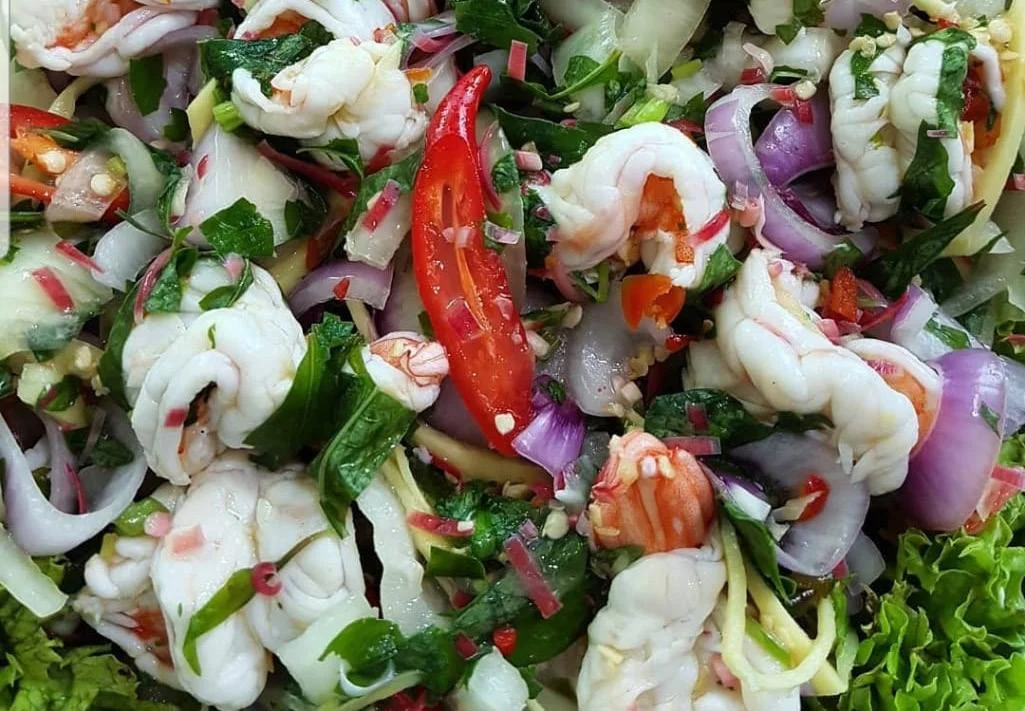
Exploring Bruneian Cuisine: Hinava (Ceviche Delight)
Hey foodies! Today, let’s take a culinary journey to the heart of Brunei and dive into one of its iconic dishes, Hinava! Originating from the indigenous communities of Borneo, this dish embodies the vibrant flavors of Brunei’s coastal regions. Join me as we uncover the secrets of this delightful ceviche-style dish.
History and Background
Hinava has deep roots in the rich cultural tapestry of Brunei. It is believed to have originated from the indigenous communities of the Kadazan-Dusun people in the Malaysian state of Sabah, which shares cultural ties with Brunei. Traditionally, this dish was prepared using fresh catch from the sea, reflecting the coastal lifestyle of the region. Over time, it has become a beloved dish enjoyed by locals and visitors alike, showcasing Brunei’s culinary diversity.
Ingredients
- Fresh fish fillets (such as mackerel or tuna)
- Shallots
- Bird’s eye chili
- Ginger
- Lime juice
- Bird’s eye chili (optional)
- Salt
- Cucumber
- Red onion
- Tomato
- Coriander leaves
Recipe
Ingredients Preparation
- Prepare the Fish:
- Rinse the fish fillets under cold water and pat them dry with paper towels.
- Cut the fillets into small bite-sized pieces.
- Prepare the Aromatics:
- Peel and thinly slice the shallots.
- Finely chop the bird’s eye chili, removing the seeds if you prefer less heat.
- Peel and grate the ginger.
- Chop the coriander leaves for garnish.
- Prepare the Vegetables:
- Peel and thinly slice the cucumber.
- Thinly slice the red onion.
- Dice the tomato into small pieces.
Cooking Instructions
- Marinate the Fish:
- In a mixing bowl, combine the fish pieces with lime juice, shallots, bird’s eye chili, grated ginger, and a pinch of salt.
- Toss gently to ensure the fish is evenly coated with the marinade.
- Let it marinate in the refrigerator for at least 30 minutes to allow the flavors to meld together.
- Assemble the Hinava:
- Once the fish is marinated, remove it from the refrigerator.
- Add sliced cucumber, red onion, and diced tomato to the bowl.
- Toss everything together gently to combine.
- Taste and adjust seasoning if necessary, adding more lime juice or salt as desired.
- Serve and Enjoy:
- Transfer the Hinava to a serving dish or individual bowls.
- Garnish with freshly chopped coriander leaves.
- Serve immediately as an appetizer or as part of a main meal.
Serving Size and Nutritional Information
- Serves: 4 people
- Estimated Cooking Time: 40 minutes
- Calories per Serving: Approximately 150 calories per serving
- Nutritional Information: This dish is rich in protein from the fish and packed with vitamins and minerals from the fresh vegetables. The lime juice adds a refreshing citrusy flavor while enhancing the overall nutritional profile. Enjoy this Hinava guilt-free as a healthy and delicious addition to your meal!
Bruneian food – Kelupis (Crispy Fritters)

Exploring Bruneian Cuisine: Kelupis (Crispy Fritters)
Hey foodies! Today, let’s embark on a culinary adventure to discover the mouthwatering flavors of Brunei with Kelupis – crispy fritters that are a true delight to the taste buds.
Originating from the heart of Brunei’s vibrant food culture, Kelupis holds a special place in the culinary heritage of the region.
History and Background
Kelupis has its roots deeply embedded in the culinary traditions of Brunei, where it has been enjoyed for generations. These crispy fritters are a popular snack and street food item, often served during festive occasions, family gatherings, and as everyday treats.
With influences from Malay, Chinese, and indigenous cuisines, Kelupis showcases the rich cultural diversity of Brunei and is cherished by locals and visitors alike.
Bruneian food – Kelupis Ingredients
- Glutinous rice
- Banana leaves
- Salt
- Water
- Cooking oil
Bruneian food – Kelupis Recipe
Ingredients Preparation
- Prepare the Glutinous Rice:
- Rinse the glutinous rice under cold water until the water runs clear.
- Soak the rice in water for at least 4 hours or overnight to soften.
- Drain the soaked rice and mix in a pinch of salt.
- Prepare the Banana Leaves:
- Cut the banana leaves into small square pieces, approximately 4×4 inches in size.
- Briefly heat the banana leaves over an open flame or in a microwave to soften them.
Cooking Instructions
- Assembly:
- Take a small portion of the soaked glutinous rice and place it onto the center of a piece of banana leaf.
- Fold the banana leaf over the rice to form a neat parcel, securing the edges with toothpicks if necessary.
- Repeat this process until all the rice is used up.
- Steaming:
- Arrange the wrapped Kelupis in a steamer basket, making sure to leave space between each parcel.
- Steam the Kelupis over boiling water for approximately 30-40 minutes, or until the rice is cooked through and becomes translucent.
- Frying:
- Once the Kelupis are steamed, carefully remove them from the steamer and let them cool slightly.
- Heat cooking oil in a frying pan over medium heat.
- Fry the steamed Kelupis in batches until they turn golden brown and crispy on the outside, flipping them occasionally for even cooking.
- Serve and Enjoy:
- Drain the fried Kelupis on paper towels to remove excess oil.
- Serve the crispy fritters warm as a delightful snack or accompaniment to your favorite dishes.
Serving Size and Nutritional Information
- Serves: 4-6 people
- Estimated Cooking Time: 60-90 minutes
- Calories per Serving: Approximately 150-200 calories per serving (varies depending on size and frying method)
- Nutritional Information: Kelupis offers a crunchy texture from the frying process, with the glutinous rice providing a source of carbohydrates. Enjoy these crispy fritters as a tasty snack or side dish for a flavorful journey through Bruneian cuisine!
Bruneian food – Ayam Penyet (Smashed Chicken)

Exploring Bruneian Flavors: Ayam Penyet (Smashed Chicken)
Hey there, fellow food adventurers! Today, we’re delving into the heart of Bruneian cuisine with a dish that’s sure to tantalize your taste buds – Ayam Penyet, also known as Smashed Chicken. Originating from the bustling streets and home kitchens of Brunei, Ayam Penyet is a dish that packs a punch of flavor and spice.
Let’s uncover the story behind this beloved Bruneian favorite.
History and Background
Ayam Penyet traces its roots back to Indonesia, where it gained popularity before spreading to neighboring countries like Brunei. The term “Penyet” refers to the method of smashing the chicken to tenderize it and allow the flavors to penetrate deeper.
In Brunei, Ayam Penyet has become a staple street food dish, often served with a side of spicy sambal and fresh vegetables. It’s a dish that reflects the vibrant culinary heritage of the region and is loved by locals and visitors alike.
Bruneian food – Ayam Penyet Ingredients
- Chicken pieces (preferably thigh or breast)
- Garlic
- Shallots
- Candlenuts
- Salt
- Pepper
- Turmeric powder
- Tamarind paste
- Palm sugar
- Lemongrass
- Kaffir lime leaves
- Cooking oil
- Lime wedges (for serving)
- Fresh vegetables (cucumber, lettuce, tomato, etc., for serving)
- Sambal (optional, for serving)
Bruneian food – Ayam Penyet Recipe
Ingredients Preparation
- Prepare the Chicken:
- Clean and pat dry the chicken pieces.
- Make small incisions in the chicken to allow the marinade to penetrate.
- Prepare the Marinade:
- In a blender or mortar and pestle, combine garlic, shallots, candlenuts, salt, pepper, turmeric powder, tamarind paste, and palm sugar to form a smooth paste.
- Rub the marinade mixture all over the chicken pieces, ensuring they are evenly coated.
- Let the chicken marinate for at least 30 minutes to allow the flavors to develop.
Cooking Instructions
- Smashing the Chicken:
- Heat cooking oil in a frying pan over medium heat.
- Once the oil is hot, add the marinated chicken pieces and fry until they are golden brown and cooked through.
- Remove the chicken from the pan and place it on a sturdy surface.
- Using a pestle or the back of a heavy spoon, gently smash the chicken to flatten it slightly. This helps to tenderize the meat and create a crispy exterior.
- Making the Sambal:
- In a separate pan, heat a bit of oil and sauté minced garlic until fragrant.
- Add chopped lemongrass, kaffir lime leaves, and chili paste (sambal) to the pan.
- Cook the sambal mixture until it thickens slightly and the flavors meld together. Adjust seasoning with salt and palm sugar if needed.
- Serving:
- Arrange the smashed chicken on a serving plate.
- Serve alongside fresh vegetables and lime wedges.
- Drizzle the sambal sauce over the chicken or serve it on the side for dipping.
Serving Size and Nutritional Information
- Serves: 4 people
- Estimated Cooking Time: 45 minutes
- Calories per Serving: Approximately 300-400 calories per serving (varies depending on portion size and ingredients used)
- Nutritional Information: Ayam Penyet is rich in protein from the chicken and offers a burst of flavor from the aromatic spices and herbs. Enjoy this delicious dish as a hearty meal that captures the essence of Bruneian street food culture!
Bruneian food – Hati Buyah (Beef Lungs)

Savoring Bruneian Flavors: Hati Buyah (Beef Lungs)
Hey, foodies! Today, let’s dive into the culinary heritage of Brunei with a dish that might surprise your taste buds – Hati Buyah, or Beef Lungs.
Originating from the diverse and vibrant food scene of Brunei, Hati Buyah is a unique delicacy that showcases the rich flavors and culinary traditions of the region.
History and Background
Hati Buyah has deep roots in Brunei’s cultural and culinary history. Traditionally, it was a dish enjoyed by locals as a way to make use of all parts of the animal and minimize waste. Over time, it evolved into a beloved delicacy, often served during special occasions and gatherings.
While it may not be as common as other dishes, Hati Buyah holds a special place in Brunei’s gastronomic landscape, reflecting the resourcefulness and creativity of its people.
Bruneian food – Hati Buyah Ingredients
- Beef lungs
- Shallots
- Garlic
- Ginger
- Turmeric
- Lemongrass
- Kaffir lime leaves
- Coconut milk
- Water
- Cooking oil
- Salt
- Pepper
- Lime wedges (for serving)
- Fresh herbs (cilantro, parsley, etc., for garnish)
Bruneian food – Hati Buyah Recipe
Ingredients Preparation
- Prepare the Beef Lungs:
- Clean the beef lungs thoroughly under cold water, removing any excess fat or membranes.
- Cut the beef lungs into bite-sized pieces and set aside.
- Prepare the Aromatics:
- Peel and finely chop shallots, garlic, and ginger.
- Bruise lemongrass stalks to release flavor.
- Tear kaffir lime leaves into smaller pieces.
Cooking Instructions
- Sautéing the Aromatics:
- Heat cooking oil in a large pot over medium heat.
- Add chopped shallots, garlic, and ginger to the pot, sautéing until fragrant and golden brown.
- Stir in bruised lemongrass stalks and torn kaffir lime leaves, allowing them to infuse their flavors into the oil.
- Adding the Beef Lungs:
- Once the aromatics are fragrant, add the prepared beef lungs to the pot.
- Season with salt and pepper to taste, stirring to coat the meat evenly with the spices.
- Cook the beef lungs until they are lightly browned on the outside, stirring occasionally to prevent sticking.
- Simmering in Coconut Milk:
- Pour coconut milk and water into the pot, covering the beef lungs completely.
- Bring the mixture to a gentle simmer, then reduce the heat and let it simmer uncovered for about 1 to 1.5 hours, or until the beef lungs are tender and cooked through.
- Stir occasionally and skim off any excess fat or foam that rises to the surface.
- Final Seasoning and Serving:
- Taste the Hati Buyah and adjust seasoning with salt and pepper if needed.
- Serve the dish hot, garnished with fresh herbs and lime wedges on the side for a burst of citrusy flavor.
Serving Size and Nutritional Information
- Serves: 4-6 people
- Estimated Cooking Time: 90 minutes
- Calories per Serving: Approximately 200-300 calories per serving (varies depending on portion size and ingredients used)
- Nutritional Information: Hati Buyah is rich in protein from the beef lungs and offers a range of flavors from the aromatic spices and coconut milk. Enjoy this unique Bruneian dish as a hearty and satisfying meal that reflects the culinary heritage of the region!
Bruneian food – Gadong Rojak: A Flavorful Medley of Textures

Exploring Bruneian Delicacies: Gadong Rojak: A Flavorful Medley of Textures
Hey there, food adventurers! Today, we’re immersing ourselves in the vibrant flavors of Brunei with Gadong Rojak – a dish that’s a true celebration of texture and taste. Originating from the bustling streets of Gadong, this dish is a beloved staple in Bruneian cuisine.
Let’s delve into the history and savor the tantalizing flavors of this unique dish.
History and Background
Gadong Rojak has its roots deeply embedded in the bustling markets and vibrant street food culture of Brunei, particularly in the district of Gadong. This flavorful medley of textures is a testament to Brunei’s rich culinary heritage, combining influences from Malay, Chinese, and indigenous cuisines. Traditionally served as a snack or appetizer, Gadong Rojak has become a beloved dish enjoyed by locals and visitors alike, offering a delightful blend of sweet, savory, and tangy flavors.
Bruneian food – Gadong Rojak Ingredients
- Firm tofu, cubed
- Cucumbers, sliced
- Pineapple, cubed.
- Fried dough fritters (cakwe), sliced.
- Bean sprouts.
- Hard-boiled eggs, sliced
- Fresh coriander leaves
- Rojak sauce (a mixture of tamarind paste, shrimp paste, sugar, chili, and lime juice)
- Crushed peanuts
Bruneian food – Gadong Rojak Recipe
Ingredients Preparation
- Prepare the Ingredients:
- Cube the firm tofu and pineapple.
- Slice the cucumbers and fried dough fritters (cakwe).
- Hard-boil the eggs and slice them.
- Rinse the bean sprouts and set aside.
- Chop fresh coriander leaves for garnish.
- Prepare the rojak sauce by mixing tamarind paste, shrimp paste, sugar, chili, and lime juice in a bowl.
Assembly and Serving
- Assemble the Gadong Rojak:
- Arrange the prepared ingredients (tofu, cucumbers, pineapple, fried dough fritters, bean sprouts, and hard-boiled eggs) on a serving platter or individual plates.
- Drizzle the rojak sauce generously over the ingredients, ensuring each component is coated with the flavorful sauce.
- Garnish and Serve:
- Sprinkle crushed peanuts and chopped fresh coriander leaves over the Gadong Rojak for added flavor and texture.
- Serve the dish immediately, allowing guests to mix and mingle the ingredients to their liking.
Serving Size and Nutritional Information
- Serves: 2-4 people
- Estimated Cooking Time: 15 minutes
- Calories per Serving: Approximately 300-400 calories per serving (varies depending on portion size and ingredients used)
- Nutritional Information: Gadong Rojak offers a variety of textures and flavors, with the tofu providing protein, the vegetables offering vitamins and minerals, and the rojak sauce adding a burst of tangy sweetness. Enjoy this delightful dish as a refreshing snack or appetizer that captures the essence of Bruneian street food culture!
Bruneian food – Roti Kahwin: A Sweet Indulgence

Discovering Bruneian Delights: Roti Kahwin: A Sweet Indulgence
Hey, fellow foodies! Today, we’re diving into the sweet world of Brunei with Roti Kahwin – a delightful treat that’s sure to satisfy your sweet tooth.
Originating from the vibrant kitchens and bustling markets of Brunei, Roti Kahwin is a beloved snack that captures the essence of Bruneian culinary culture.
History and Background
Roti Kahwin has its roots in the multicultural fabric of Brunei, where it has been enjoyed for generations. The name “Roti Kahwin” translates to “Marriage Bread” in Malay, symbolizing the perfect union of flavors in this dish.
Traditionally served during special occasions, such as weddings and festive celebrations, Roti Kahwin has become a beloved snack enjoyed by locals and visitors alike. With influences from Malay, Chinese, and Indian cuisines, this sweet treat represents the diverse culinary heritage of Brunei.
Bruneian food – Roti Kahwin Ingredients
- Bread slices
- Butter
- Kaya (coconut and pandan jam)
- Margarine (optional)
Bruneian food – Roti Kahwin Recipe
Ingredients Preparation
- Prepare the Bread:
- Take slices of bread and lightly toast them to your preference.
- If desired, spread a thin layer of margarine on one side of each bread slice.
- Prepare the Kaya:
- If using homemade kaya, ensure it is at room temperature and spreadable.
- If using store-bought kaya, no preparation is needed.
Assembly
- Layering the Ingredients:
- Spread a generous amount of kaya on one side of a toasted bread slice.
- Place another toasted bread slice on top, creating a kaya sandwich.
- Repeat this process for the remaining bread slices.
- Adding Butter:
- Spread a thin layer of butter on the top of each kaya sandwich, adding richness and flavor.
- Cutting and Serving:
- Cut the Roti Kahwin sandwiches into halves or quarters, creating bite-sized pieces.
- Arrange the pieces on a serving platter or individual plates.
Serving Size and Nutritional Information
- Serves: 2-4 people
- Estimated Cooking Time: 10 minutes
- Calories per Serving: Approximately 200-250 calories per serving (varies depending on portion size and ingredients used)
- Nutritional Information: Roti Kahwin offers a blend of sweetness from the kaya jam and richness from the butter, making it a delightful indulgence. Enjoy this sweet treat as a snack or dessert that captures the essence of Bruneian hospitality and culinary tradition!
Conclusion
Brunei’s cuisine is a captivating tapestry woven from the threads of its rich history, unique geography, and vibrant climate. From the bounty of the South China Sea to the heart of the rainforest, each dish tells a story. Explore ancient trade routes through the fragrant curries, discover indigenous influences in the unique ingredients, and savor the legacy of neighboring cultures in the delectable sweets.
Brunei’s culinary adventure isn’t just about filling your plate, it’s about embarking on a journey through time and culture with every bite. So, the next time you have the opportunity, delve into the flavors of Brunei. You might just discover your new favorite dish, and in the process, gain a deeper appreciation for this fascinating country.
Ready to explore further? This article has just scratched the surface! Consider researching specific dishes that pique your interest or delve deeper into the fascinating history and cultural influences that have shaped Brunei’s unique cuisine.
Frequently Asked Questions
In this chapter, we address eight frequently asked questions about Brunei’s culinary traditions, providing insightful answers to deepen your understanding and appreciation of this Southeast Asian gem.
What are the main influences on Brunei’s cuisine?
Brunei’s cuisine is a melting pot of influences from various cultures, including Malay, Chinese, Indian, and indigenous Dayak. These diverse culinary traditions have come together to create a unique fusion of flavors and techniques that define Bruneian cooking.
What are some common ingredients used in Bruneian dishes?
Common ingredients in Bruneian cuisine include seafood (such as prawns, fish, and crabs), rice, tropical fruits (like durian and mango), coconut milk, herbs (such as lemongrass and pandan leaves), and spices (including chili peppers, turmeric, and cumin).
What is Ambuyat, and how is it prepared?
Ambuyat is Brunei’s national dish, made from the starchy pith of the sago palm. To prepare ambuyat, the sago starch is mixed with water until it forms a thick, gelatinous paste. It is then served alongside various condiments and accompaniments, such as spicy sambal and tangy sour fruit sauce, and eaten with special utensils called chandas.
Are there any vegetarian or vegan options in Brunei’s cuisine?
While Bruneian cuisine is known for its emphasis on seafood and meats, there are still plenty of vegetarian and vegan options available.
Dishes like sayur lodeh (vegetable curry), kuih-muih (assorted steamed cakes), and ulam-ulam (raw vegetable salad) are popular choices for those following plant-based diets.
What are some traditional Bruneian desserts?
Traditional Bruneian desserts often feature ingredients like coconut milk, palm sugar, and glutinous rice. Popular desserts include kuih kosui (steamed rice cake), pengat pisang (banana in coconut milk), and lepat pisang (banana wrapped in banana leaves and grilled).
Can I find street food in Brunei?
Yes, street food is a vibrant aspect of Brunei’s culinary scene. Visitors can explore local markets and food stalls to sample an array of delicious snacks and meals, including nasi katok (rice with fried chicken), rojak (fruit and vegetable salad), and satay (grilled skewered meats).
Are there any must-try dishes for first-time visitors to Brunei?
For first-time visitors to Brunei, some must-try dishes include ambuyat (Brunei’s national dish), nasi lemak (fragrant rice served with various accompaniments), and rendang (spicy meat stew). These dishes offer a delicious introduction to Brunei’s culinary heritage.
What dining etiquette should I be aware of in Brunei?
When dining in Brunei, it’s important to remember a few etiquette guidelines. Always use your right hand to eat, as the left hand is considered unclean. It’s also customary to wash your hands before and after eating, and to remove your shoes before entering someone’s home.
Finally, it’s polite to wait for the host to begin eating before you start your meal.

